Flyin’ Miata makes the MX-5 soar
The Miata has long been known for being fun. One of Mazda’s first advertisements for the car called it “incredible fun to drive—for that is its only purpose for being,” and pretty much every review of the vehicle since has concurred. Yet getting behind the wheel of one still feels like being let in on a secret way to make life feel lighter and happier.
A similar phenomenon applies to one of the car’s most devoted tuning shops, Flyin’ Miata. It’s been around for 40 years—yes, longer than the car itself—and gained famed years ago for its snarling small-block V-8 Miata builds. (I’ve driven one. It’s worthy of the hype.) Yet you have to be deep inside the Miata community to really appreciate what makes this outfit special. From its participation in grassroots motorsports to its thoughtfully produced parts (the company’s $12.99 “ninja” cam alignment tool can shave hours of frustration from a timing belt change), this team of vocal Miata die-hards feels like it really belongs to the community.
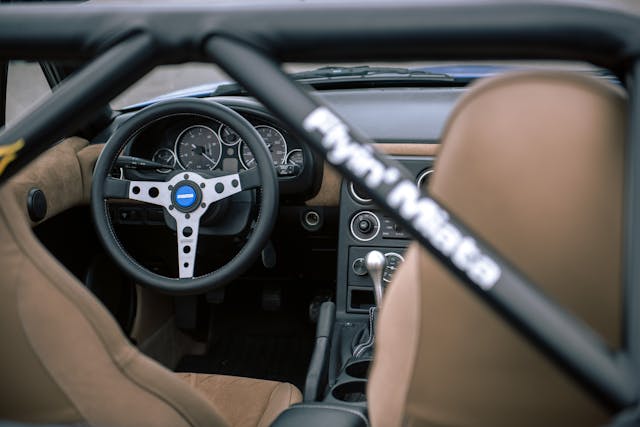
Now, the enterprise itself literally does. Founded as a family-owned business, Flyin’ Miata transitioned in the the fall of 2020 to an employee-owned cooperative. Of the 20 employees presently employed at the company’s Palisade, Colorado, headquarters, eight of them are owners. Any employee who has been part of the company for more than two years can buy in, make their voice heard, and help determine the direction of the business.
I headed to the Western Slope of the Rocky Mountains to see how Flyin’ Miata is getting along in this new era. Down a lonely back road that winds through old orchards and trendy wineries sits the company’s unremarkable-looking 25,000-square-foot warehouse. The atmosphere at the quiet reception desk is of an equally unremarkable, too-beige office. Even whispering seems rude. The lines start to fill in with color when you notice the hilariously diverse collection of Miata paraphernalia plastered on walls and littered across desks—die-cast models in various scales and liveries, a dozen fancy plaques that showcase past stories from automotive magazines, a patchwork quilt sewn by a customer and depicting beloved Flyin’ Miata shop cars.
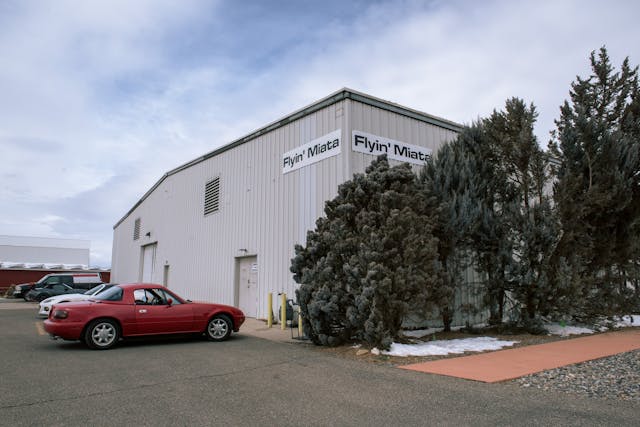
Behind the front office is the warehouse. Cabinets sit lined with brand-new turbochargers, donor engines wait on wood pallets, and plastic bins overflow with torn-apart suspension struts. At the south end of the facility is the skunkworks section with two-post lifts and well-appointed workbenches, near which sits a torn-apart third-generation Miata with a 3D-printed turbocharger bolted to its exhaust manifold. Every generation of Miata is accounted for in the shop, taking many forms: an all-original first-generation roadster, a V-8 swap, a hill-climber with bead-locked Hoosiers, and a kitted-out fourth-generation prototype with a fat turbo.
The sheer diversity of the Miatas on hand reflects the employees’ deep and nuanced passion. They care, which means they’re invested in the company’s success. No one can stomach the idea of Flyin’ Miata being sold, stripped apart, and shoved into the corners of some overcrowded parts catalog owned by a conglomerate.
The story of Flyin’ Miata began in 1983. Founder Bill Cardell opened his first automotive service center, “The Dealer Alternative, Inc.,” in New Jersey, with specialized services for Audi, Porsche, and Volkswagen. On a fateful day in 1989, one of Cardell’s customers showed up in one of the first Mazda MX-5 Miatas imported into the United States. Cardell drove the car and immediately fell in love with the fun-loving, rear-drive drop-top. He promptly placed an order for one, which he received in September 1989 and still owns today.
“A couple of months later I saw an article on a Miata turbocharger kit in Turbo Magazine and actually believed the fanciful claims they made, so I purchased [the kit],” Cardell explains. “The installation ‘directions’ consisted of six Polaroid photographs with writing on the back of each one stating, ‘It should look something like this when you’re done.’”
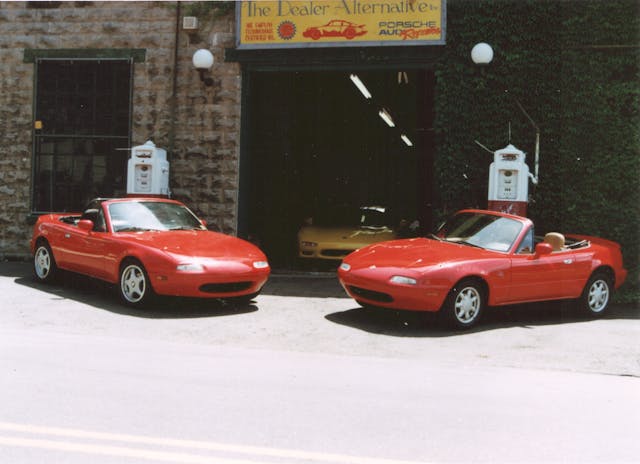
After installing a half-dozen half-baked turbo kits on client cars, an unsatisfied Cardell met with the U.S. distributor for Greddy (then Trust). They struck a deal and started piecing together their own high-quality, aftermarket spool systems for the Miata. “There were never any big, strategic business plans,” he says. “I just liked making Miatas fast.” The instructions, nonetheless, were better.
In 1996, Cardell sold his repair shop so that he and his wife, Teri, could move to Colorado to ski more often. Still, Cardell couldn’t shake his fascination with making Miatas fly, so he convinced her to be his business partner in Flyin’ Miata. “She said she’d give me one year, but she ended up staying until we sold the business to our employees in the fall of 2020,” Cardell says. They might have held out longer, even, were it not for Cardell’s Parkinson’s diagnosis, which moved up their retirement timeline.
It helped that Keith Tanner was one of the employees ready to take the reins. Director of e-commerce and systems at Flyin’ Miata, Tanner has been with the company for 22 years and boasts four Miatas in his garage. Tanner bought his first Miata in the late ’90s and started designing, building, and selling his own parts before attracting Cardell’s attention. Many know Tanner as the face of Flyin’ Miata in YouTube videos and on internet forums. His granular suspension knowledge, in particular, has turned him into a sort of Miata chassis guru.

From the Flyin’ Miata warehouse, Tanner takes us onto some of Mesa County’s most beautiful, winding roads. He’s behind the wheel of his red 1990 Miata, nicknamed “338,” (it’s the 338th Miata the come off of the Hiroshima production line) and I’m in a big-winged, ND-generation turbo test car, which handles with perfect composure, accelerates with serious pull, and has me smiling from ear to ear as we dodge wayward turkeys and speed along the clean, tight roads that wander through snow-covered valleys. As engaging as the car is to drive, I reminisce about the LS3 V-8-powered ND Miata that I drove during a shop visit years ago. It was intensely communicative, endlessly enchanting, and near flawless as a driver’s car. Why would Flyin’ Miata give that up?
“They work really well, but they didn’t work for us as a business,” Tanner says. “We almost didn’t do it. In 2008, we ran the numbers, and the general feeling was that we probably shouldn’t build V-8 Miatas, as much as we all wanted to. Bill overruled us.”
The V-8 swaps got a ton of ink in major media outlets, but turn-keys remained a small, ancillary part of the business that sucked up the most valuable resource for a small-scale shop: time. At least one quarter of the company’s parts catalog is designed by and exclusive to Flyin’ Miata, which requires a lot of hours for adequate testing and quality assurance. And, Tanner says, the workload is only going to grow when Mazda releases the fifth-generation, “NE” Miata.
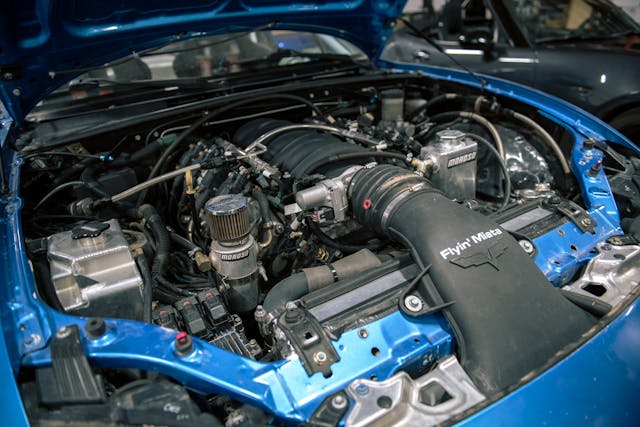
“With every new generation, we’re adding a chassis to our portfolio while still developing parts for the older ones, so when the NE comes out, our work is going to increase by 20 percent.
“The V-8s were a completely parallel product. Yeah, the brakes and suspension cross over, but all of the drivetrain was different and required an absurd amount of time and effort to build,” Tanner says. “We love them but, unfortunately, it just doesn’t work for the company.”
That choice didn’t come easy, but it is one Flyin’ Miata’s employee-owners agree is necessary. Cardell’s takeaway is that today’s Flyin’ Miata is more of a proper business than “a runaway hobby as it tended to be during my time.” All of the owners are driven and hungry. They work tirelessly to improve quality and transparency in customer service, test the ragged limits of their externally sourced and internally developed performance parts, and investigate new opportunities that become possible with emerging technologies.
3D printing, for instance, has become a massively helpful and influential system at Flyin’ Miata. They own a half-dozen Markforged printers that are constantly stacking filament to create whatever the staff requires, from mock-up turbocharger housings to replacement door bushings and the aforementioned cam-gear ninja tool. Flyin’ Miata’s “You Design” program encourages customers to submit their own Miata-specific ideas, which can be assessed and developed using company printers. If accepted, these designs are added to the roster and marketed through Flyin’ Miata’s channels. The creator then gets a royalty kickback on every unit sold.
New technologies also make it easier for Flyin’ Miata to reproduce high-quality versions of hard-to-find parts for the earliest iterations of the Miata. Factory gauge hoods, for instance, tend to break the instant you remove them. The tiny rubber lock caps that cinch onto ends of the soft- and hard-top latches? Extremely tricky to track down. “We’re never going to turn into a full-on restoration shop, though,” Tanner insists. “We’re going stay with modification. The car is such a great blank canvas, and there are always going to be people tweaking them.”
As promising as that future may seem, it depends on Flyin’ Miata navigating its new, untested business structure. Cardell admits that the co-op’s road ahead is uncertain, with a lot of teething and growing pains to endure, but that he and his wife have total faith in the current crew. Brandon Fitch, co-owner and director of product development, who drives a turbocharged ’96 Miata and has been at the company for 17 years, sees the benefit of the collective approach. “We’ve all been working together for so long that we can often see each other’s points of view, intelligently discuss issues, and come up with the best possible outcome,” Fitch says. “While final decisions sometimes take longer to make than if there were a single owner, the decisions we come up with typically feel better since we incorporate multiple viewpoints and opinions.”
Flyin’ Miata president Jeremy Ferber, an 18-year company veteran and ’95 Miata driver, has no illusions about the rocky road ahead but is certain the business is on the correct course. “We’ve quadrupled in size since I started and grown from a small ‘mom-and-pop’ feel into a good-sized company that supports the income of a lot of people, as well as the fun factor of countless customers,” he says. “I’m excited to watch us evolve from a young co-op into a mature one.”

Tanner shares that sentiment, comforted by the knowledge that none of Flyin’ Miata’s eight owners are selfish or money-hungry. All of them are protective of their shared passion, desperate for it to stay pure—and fun. “This is not a way for us all to become filthy rich and retire. It’s how we keep this business we genuinely love running and happy.”
For those working at Flyin’ Miata, the success of the business will come down to balancing heart and head. Both matter. This small company has spent more than three decades faithfully supporting some of the most dedicated automotive enthusiasts on Earth, encouraging them to fall even more in love with their joyous little roadsters, as they have with their own. As long as that’s still on the table, Flyin’ Miata is fulfilling its own “only purpose for being.”
***
Check out the Hagerty Media homepage so you don’t miss a single story, or better yet, bookmark it. To get our best stories delivered right to your inbox, subscribe to our newsletters.
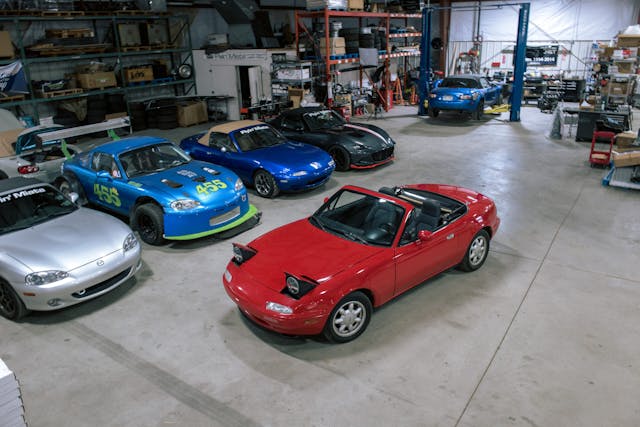
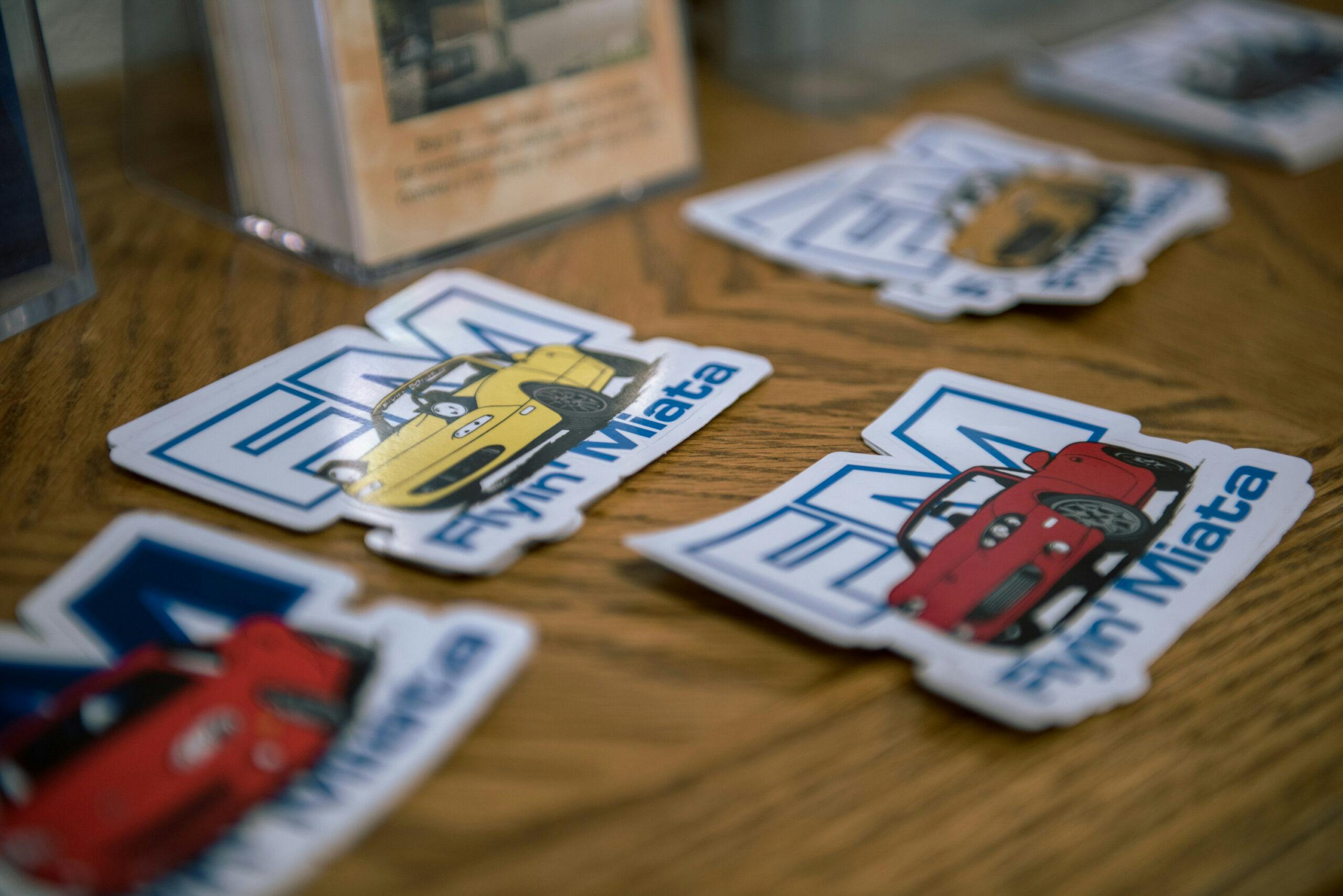
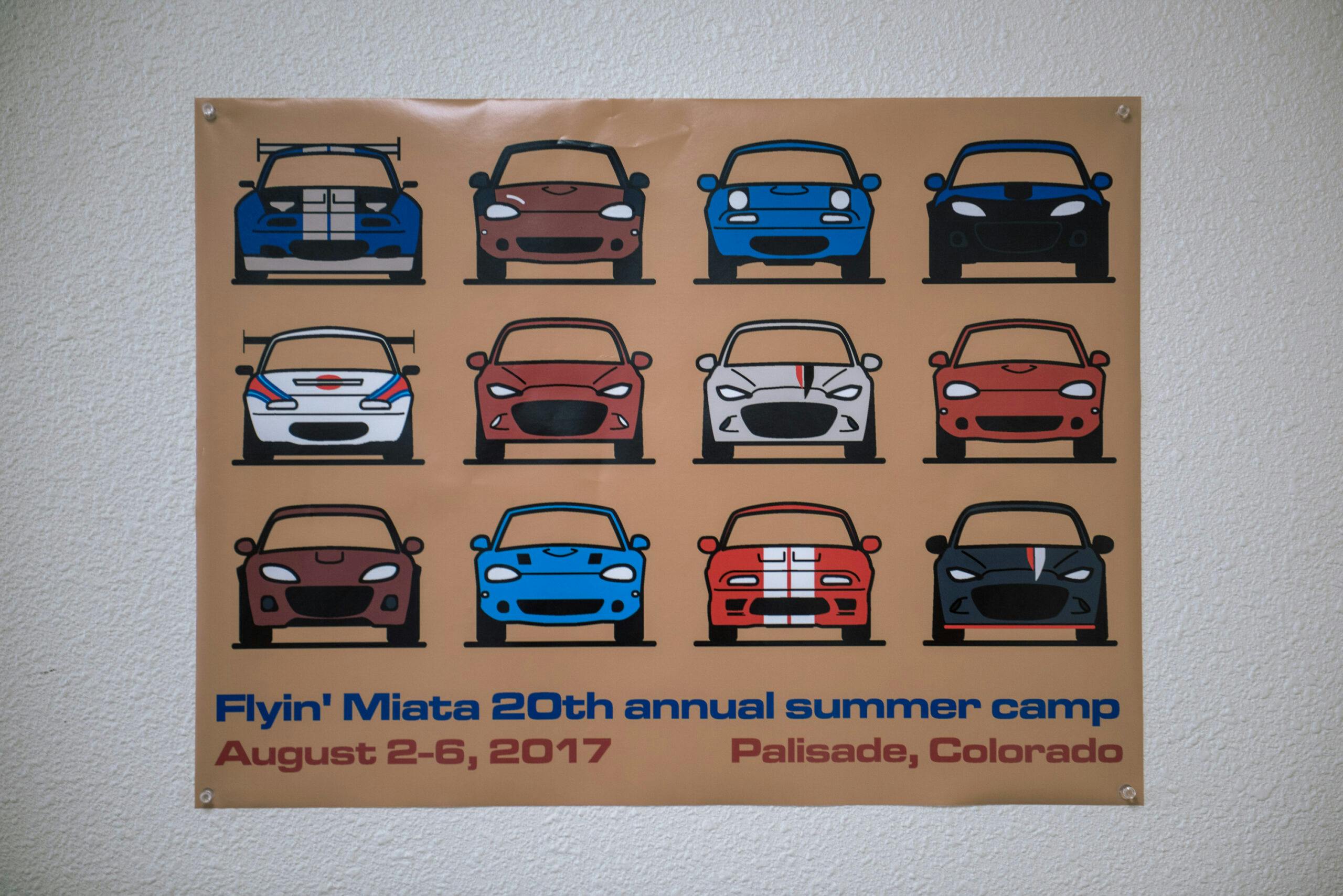
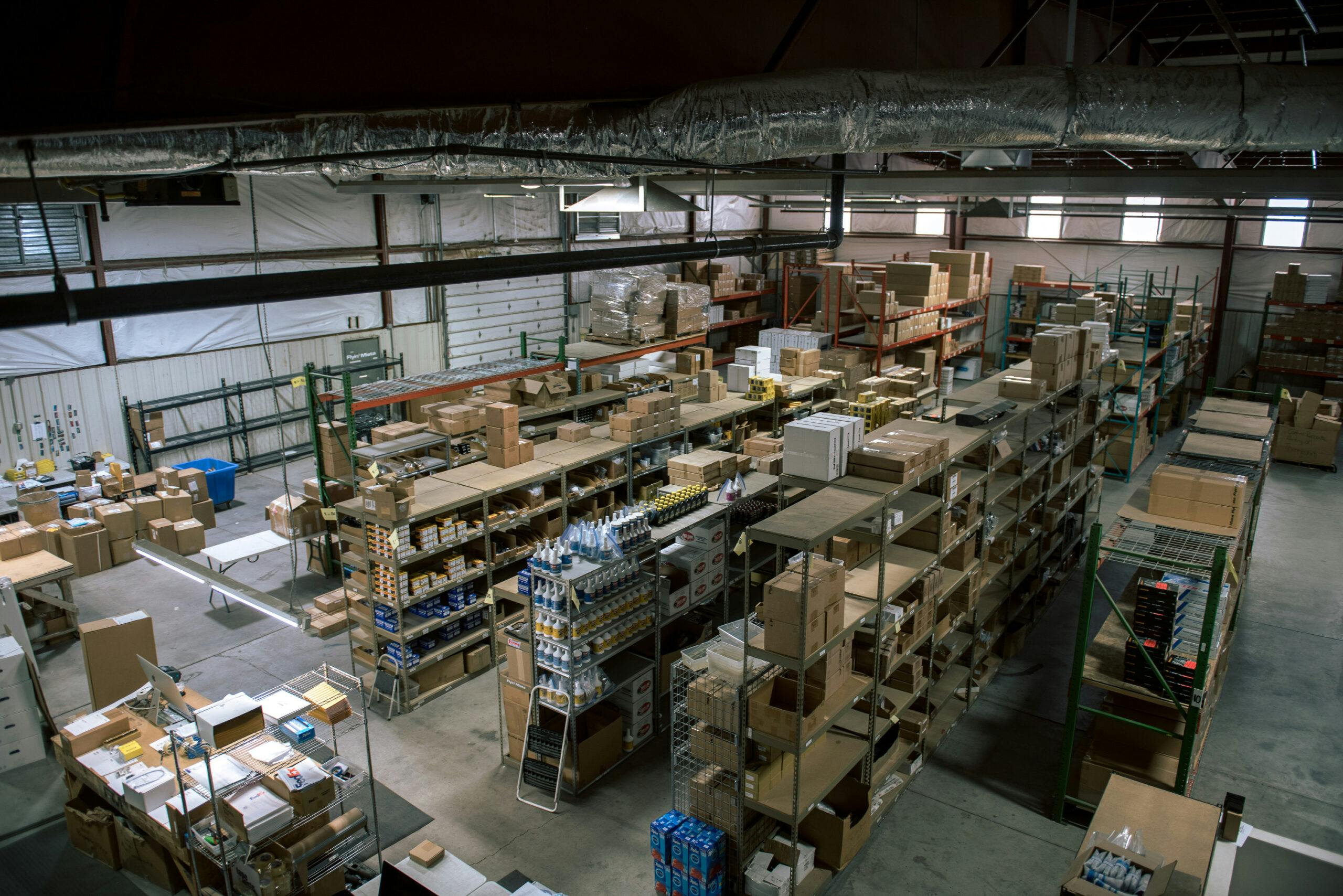
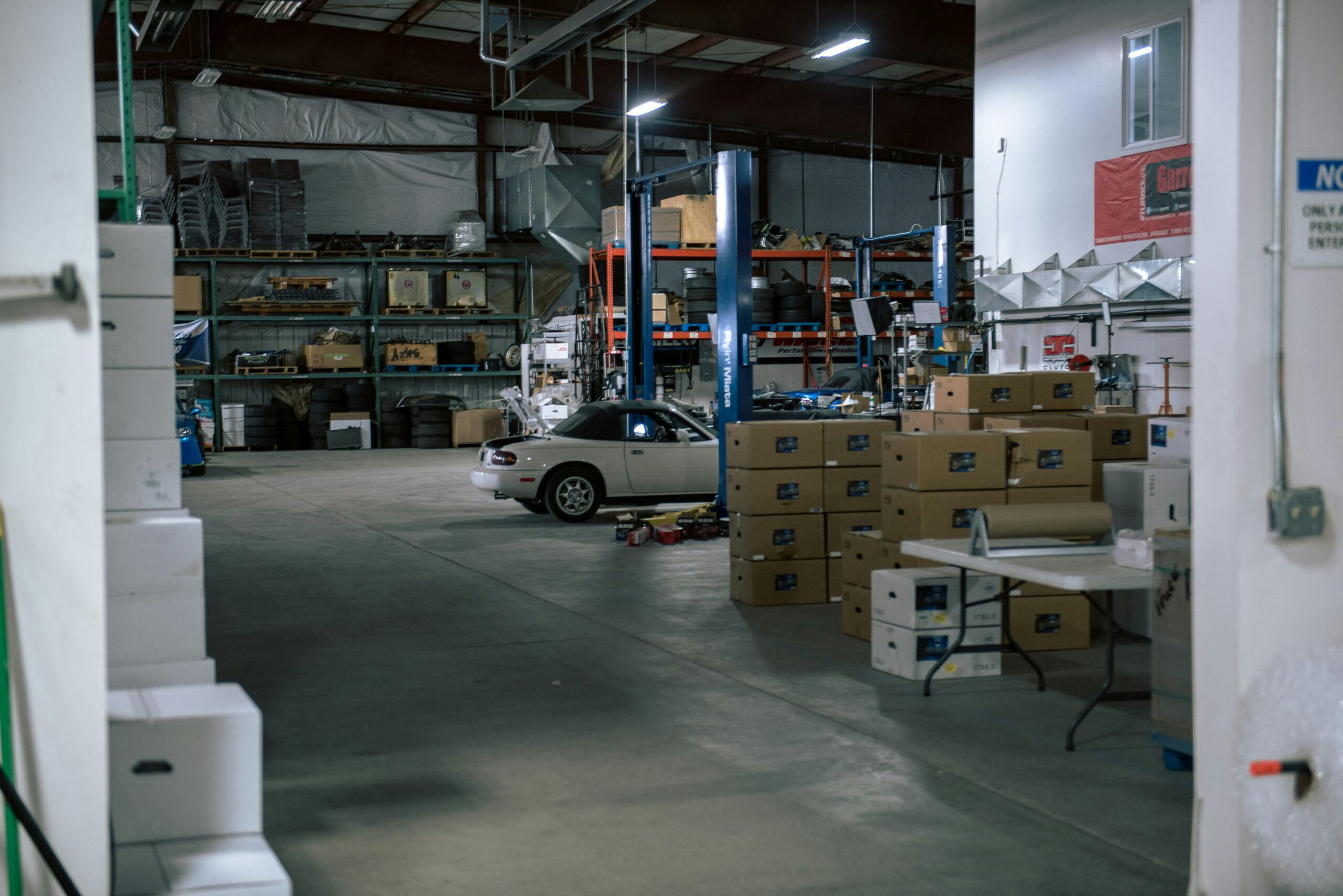

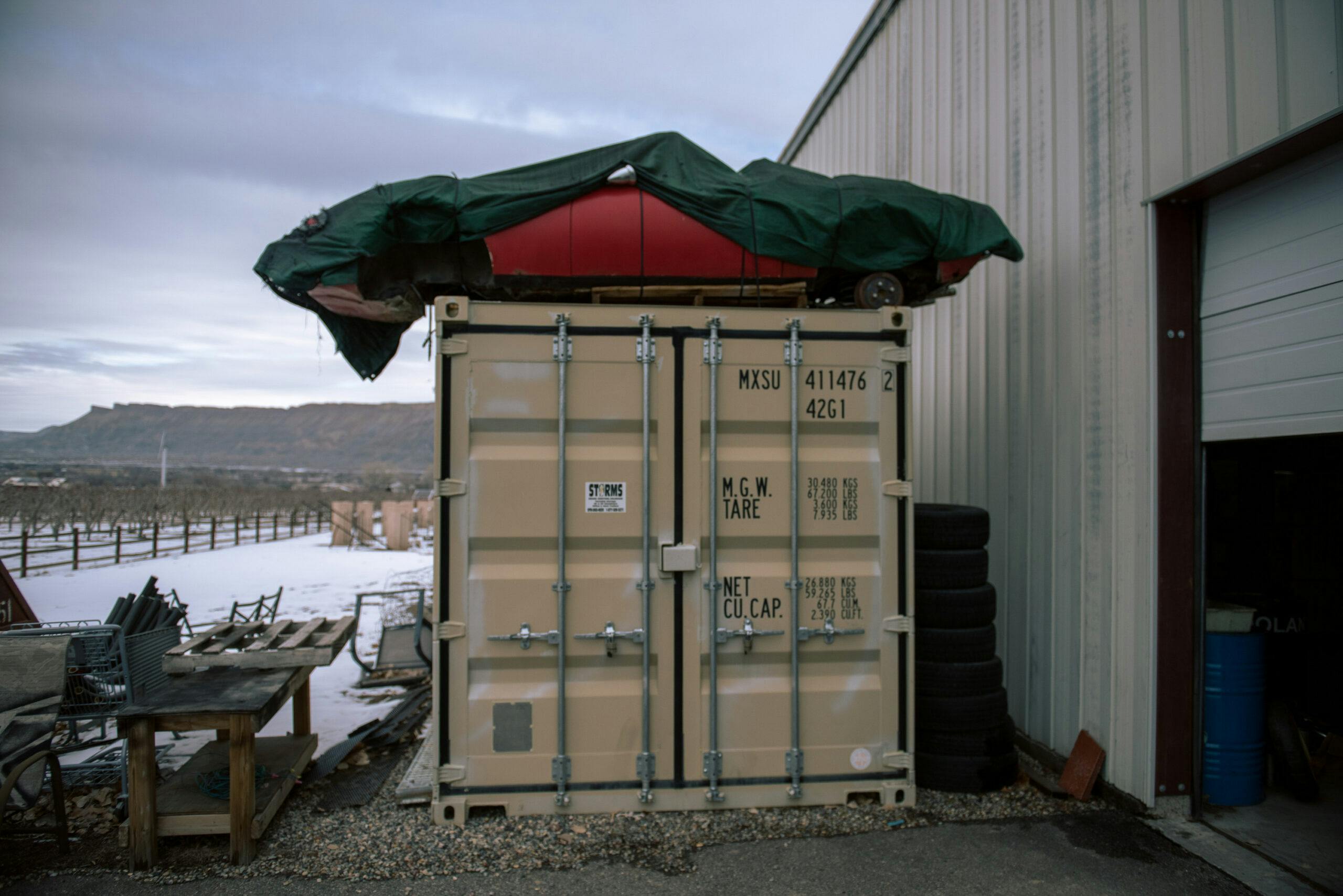

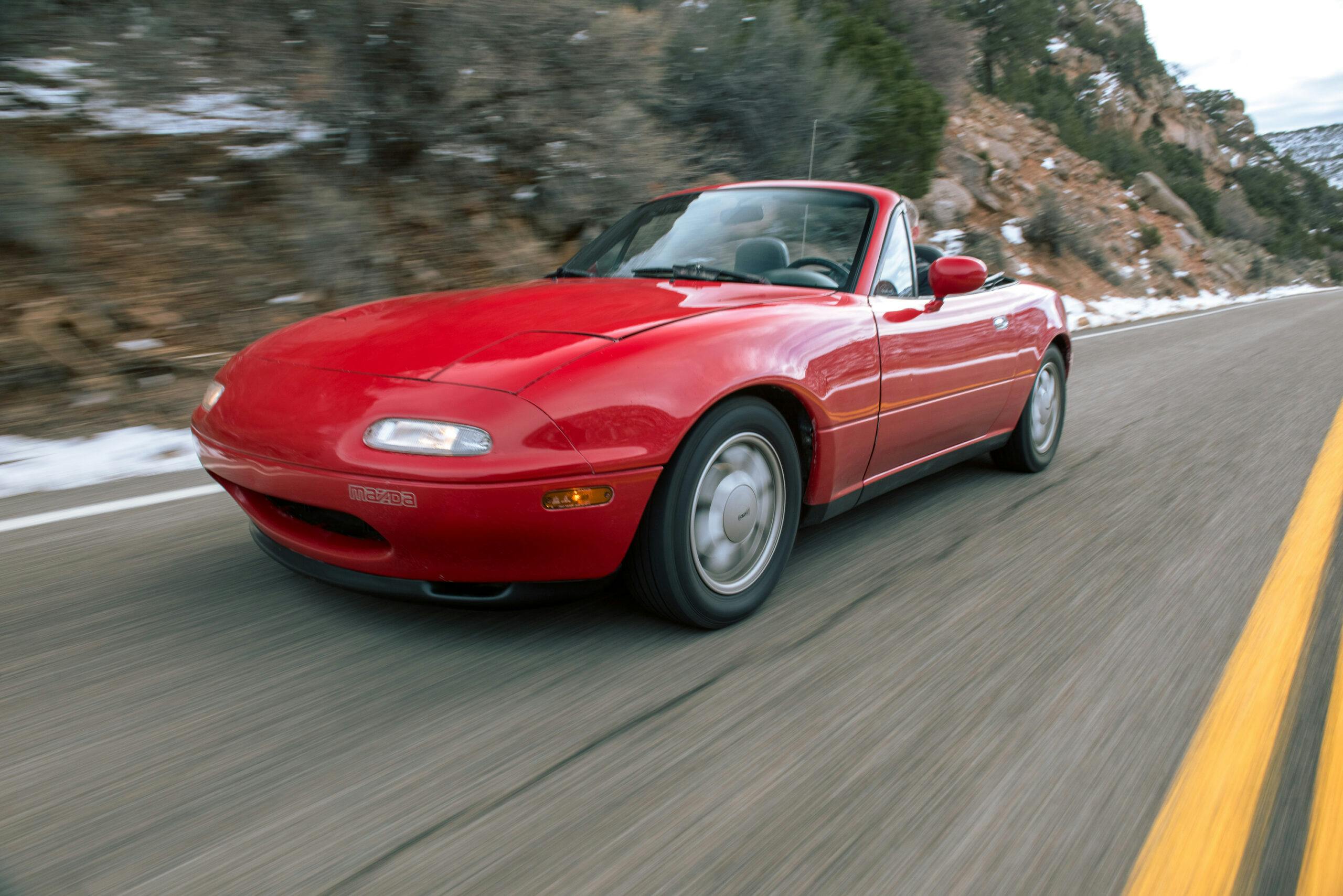
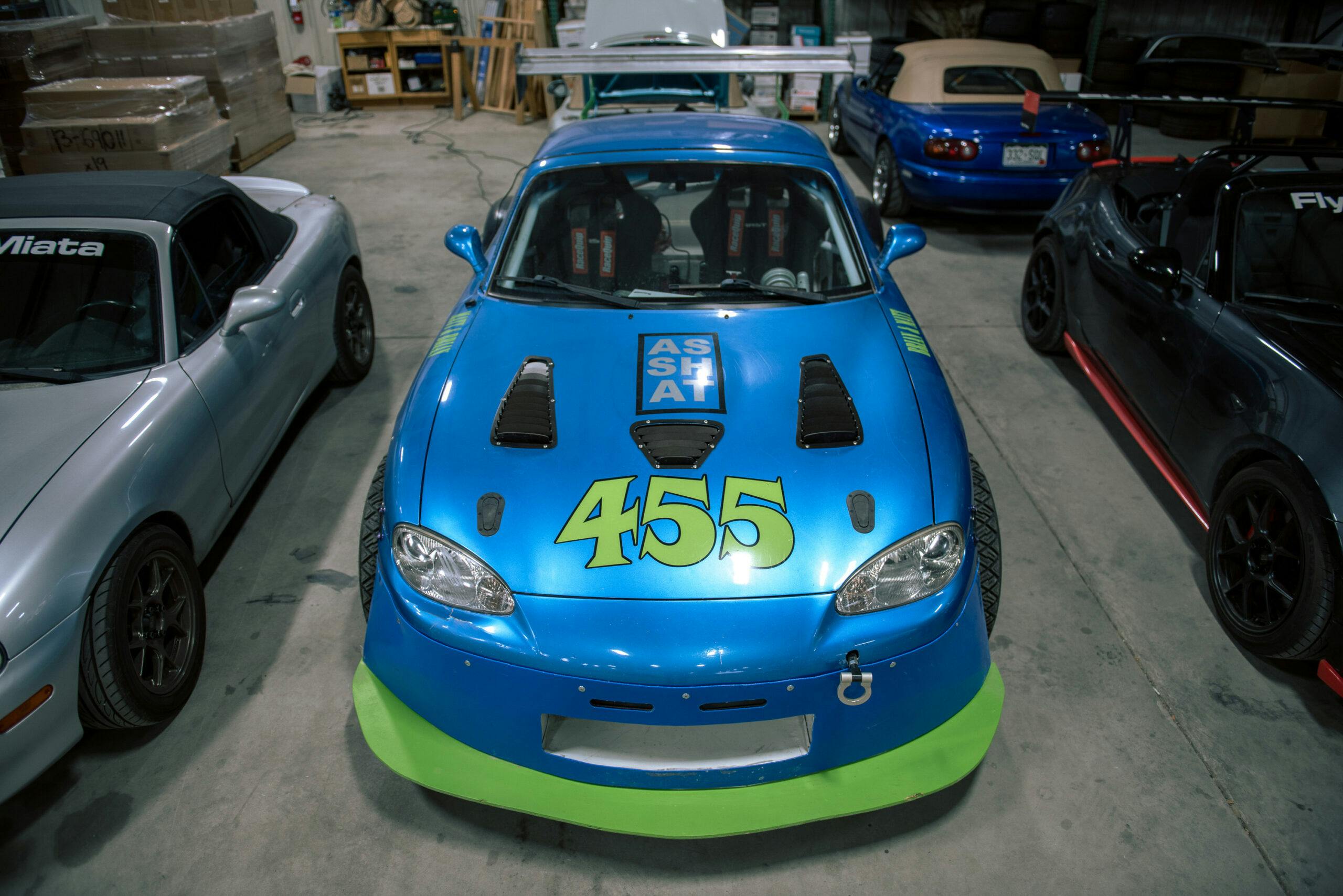
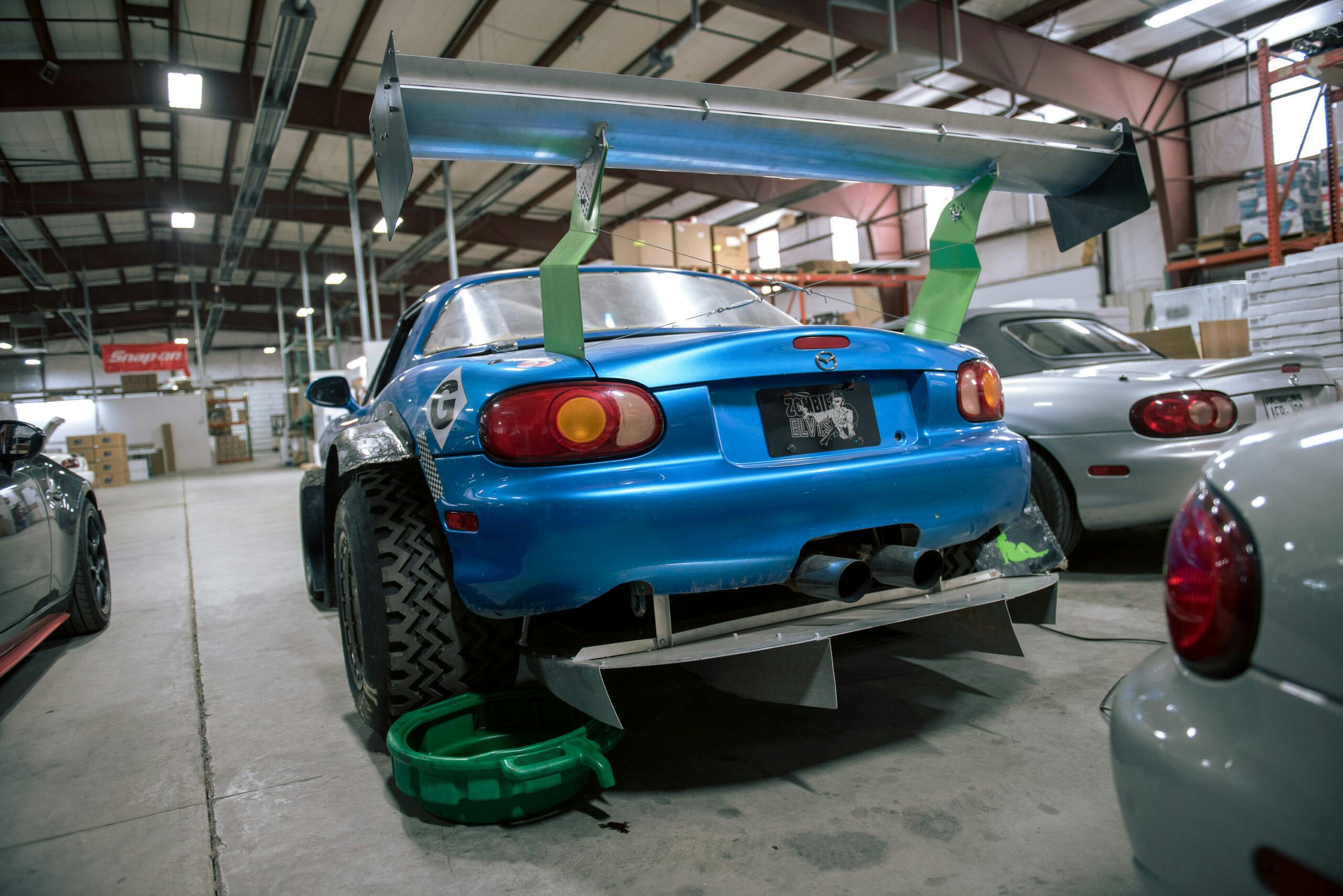
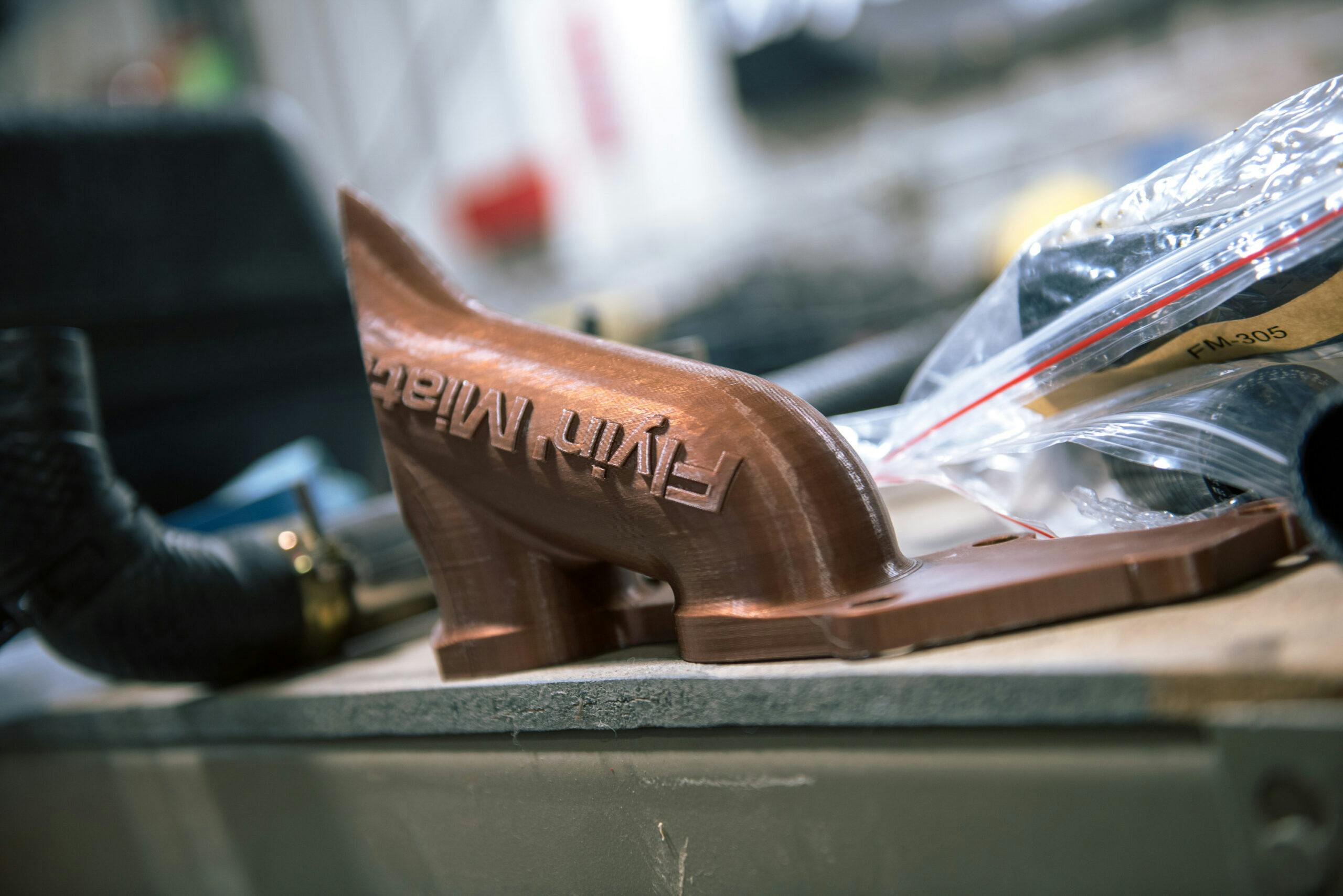
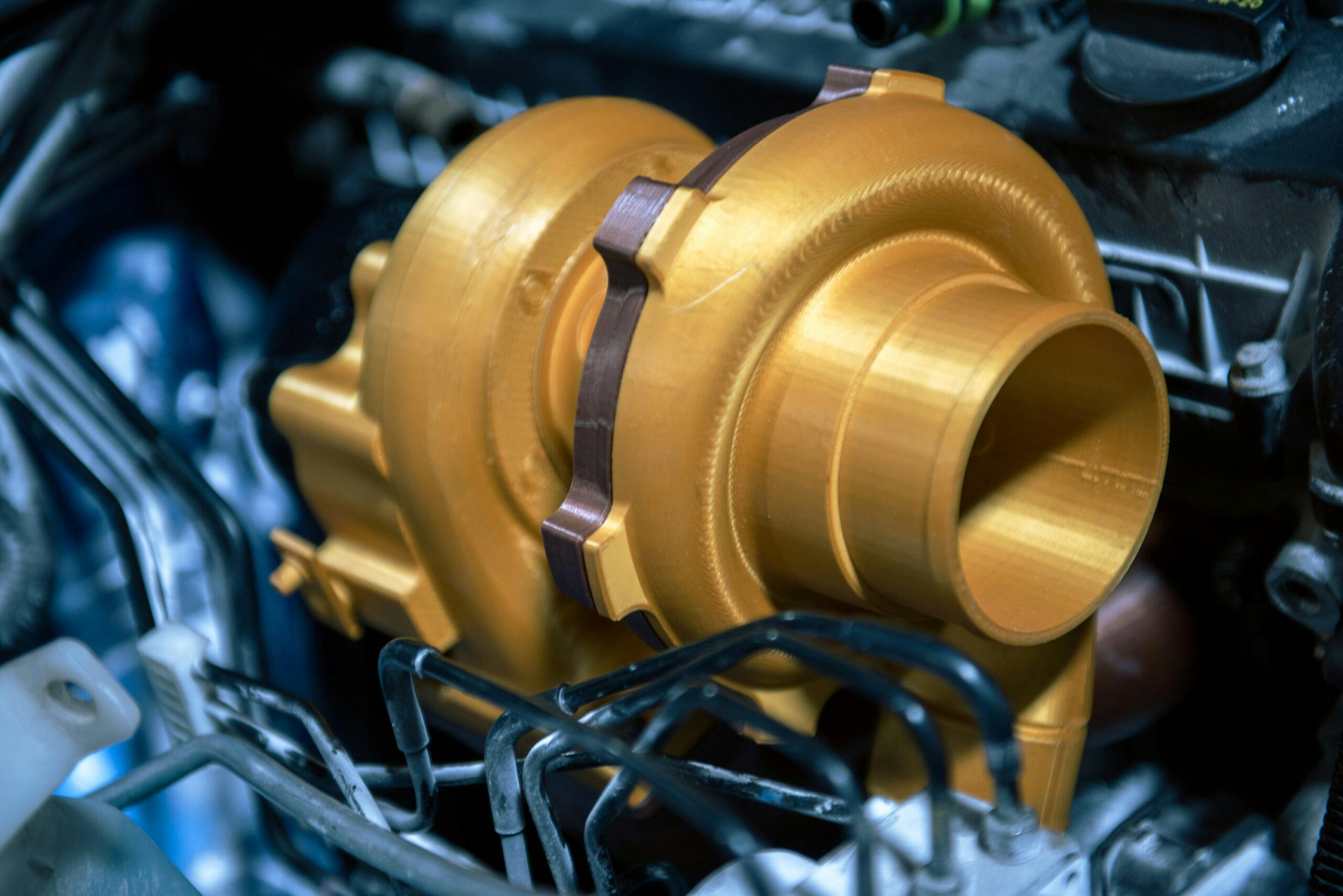


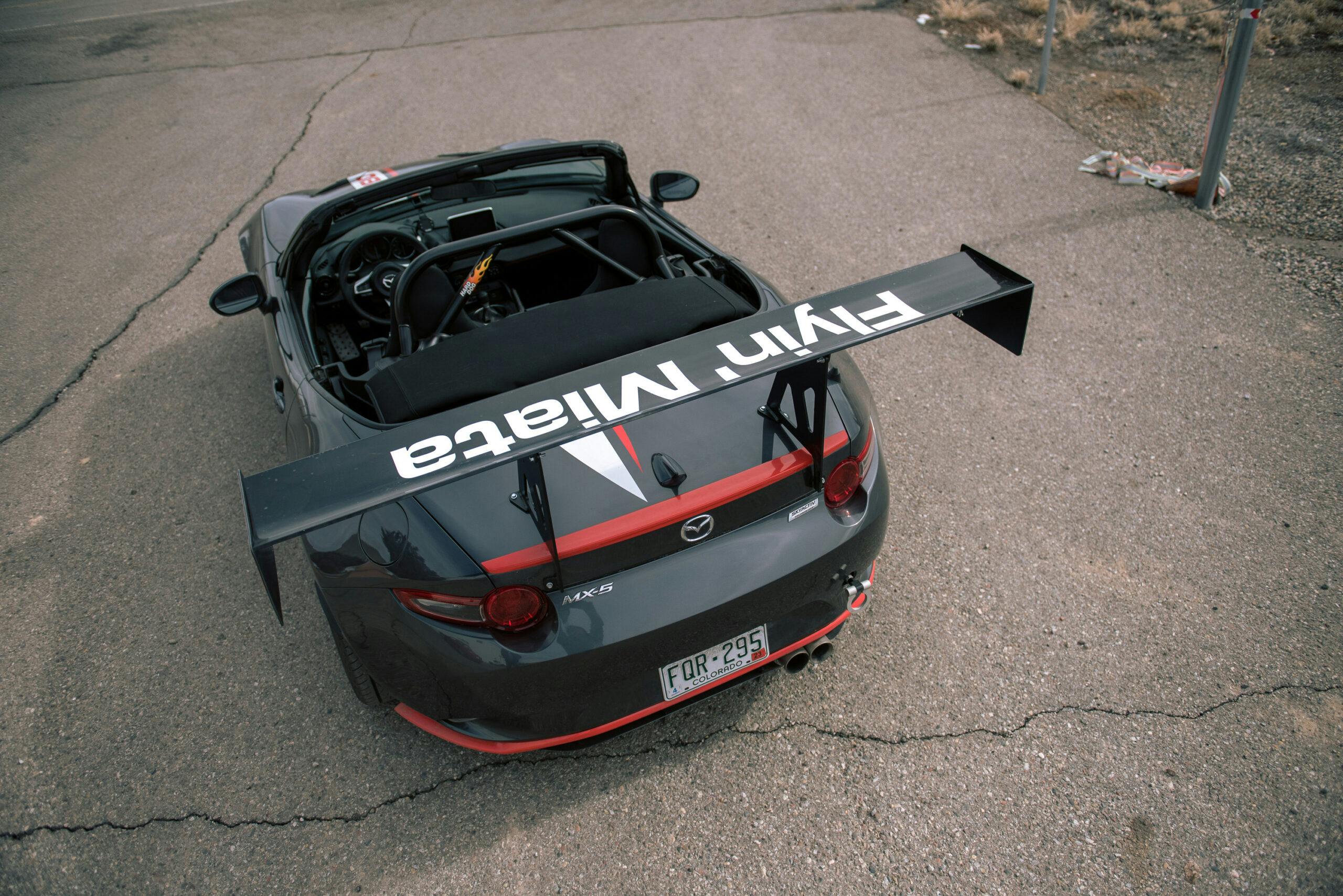
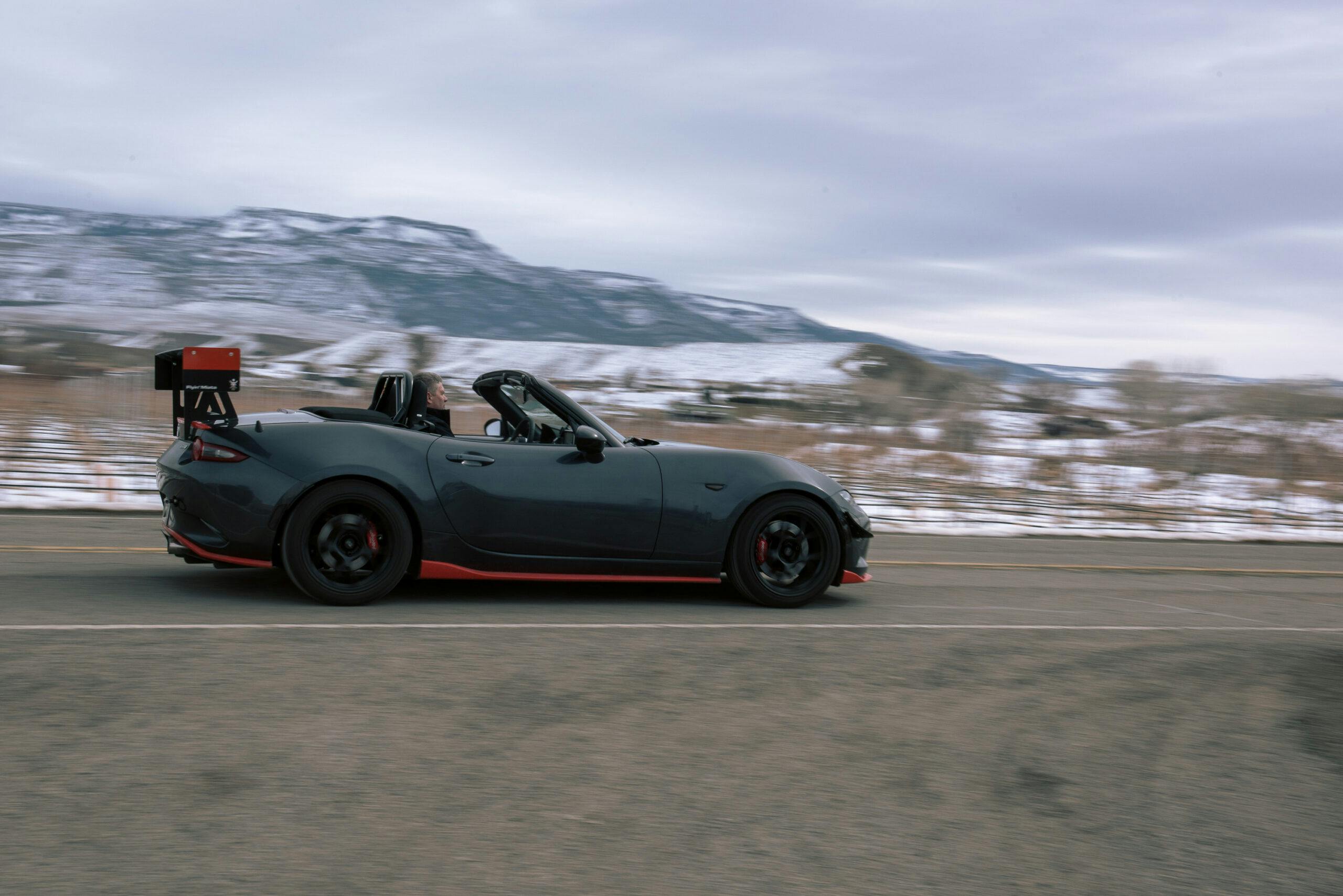
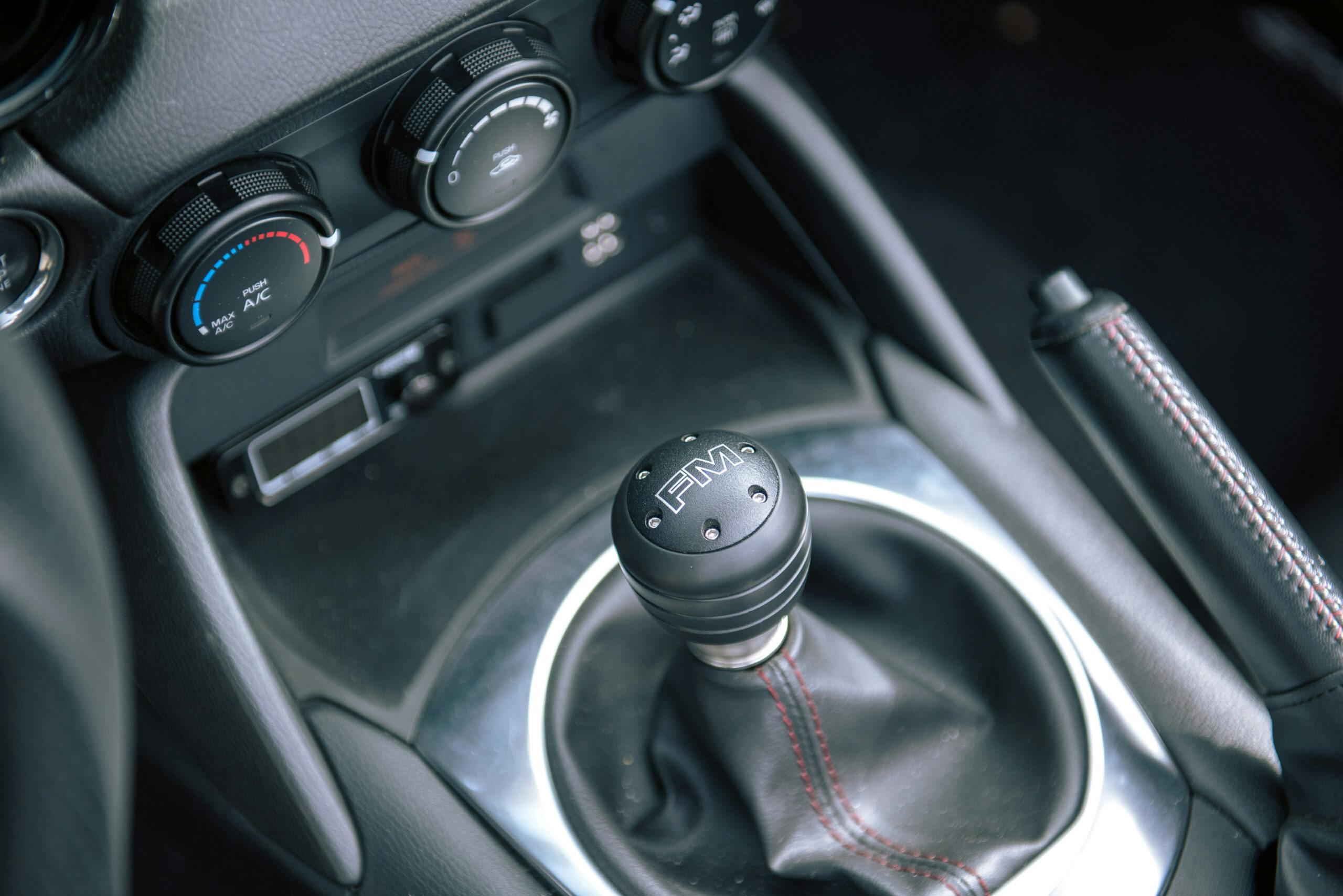
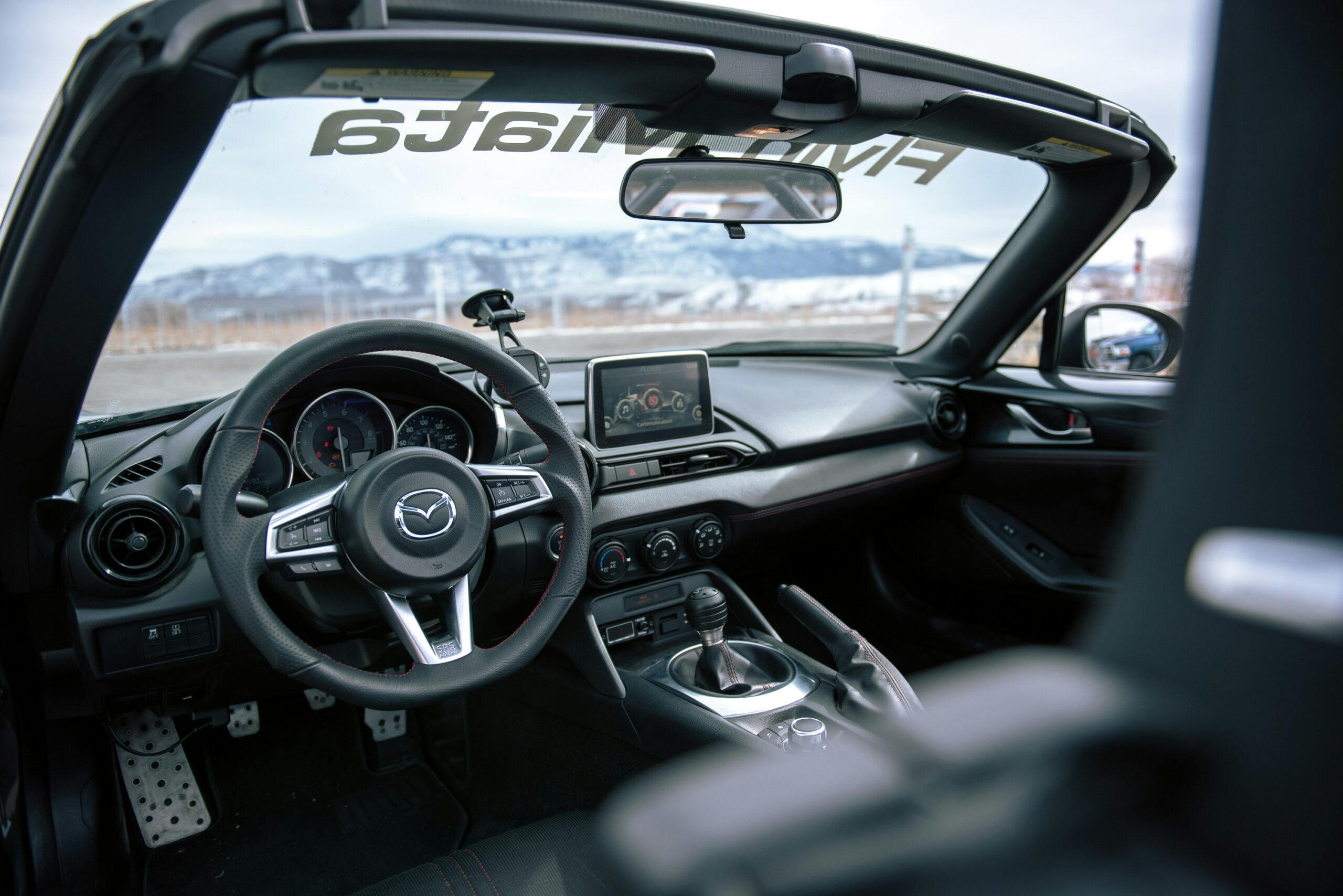
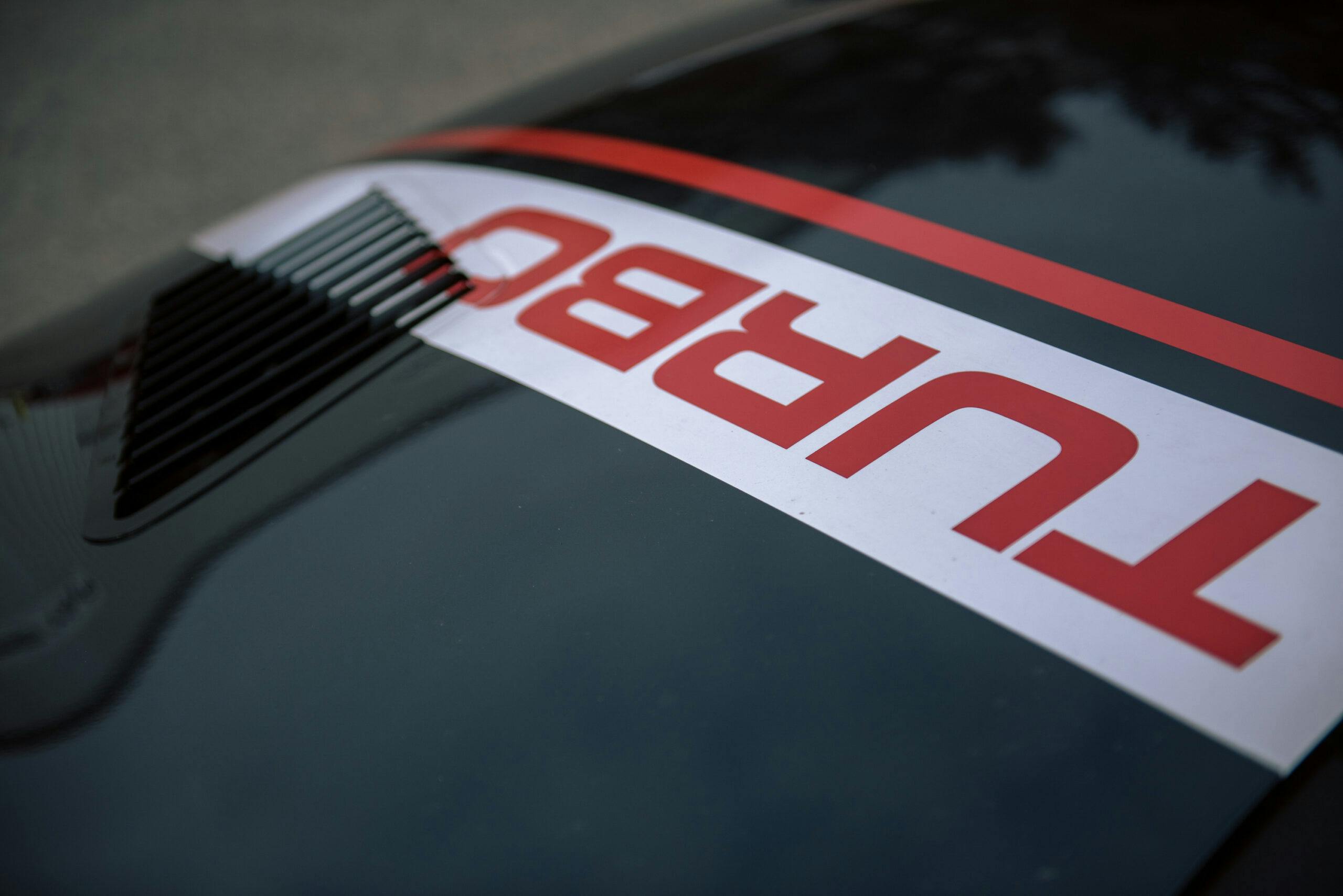
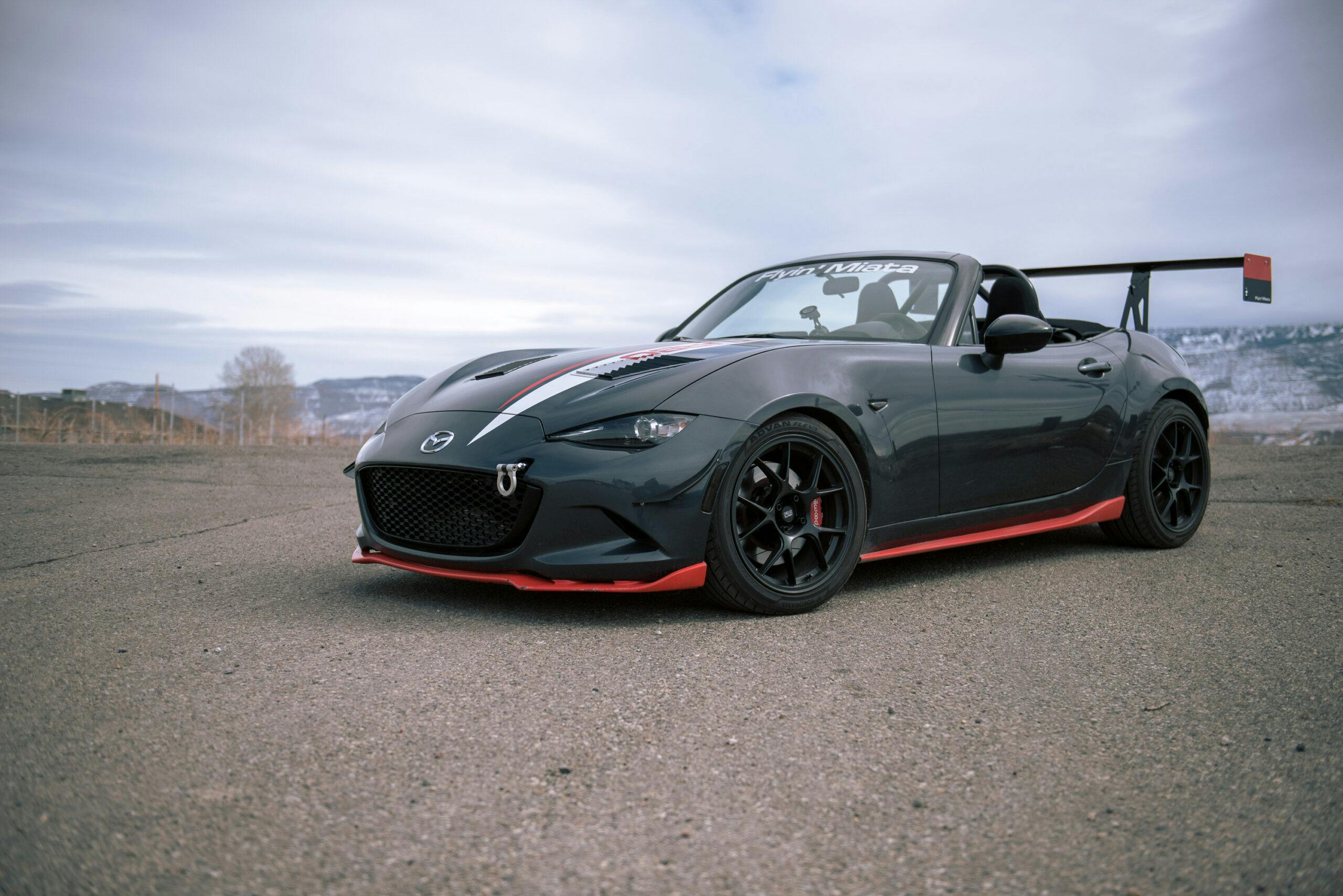

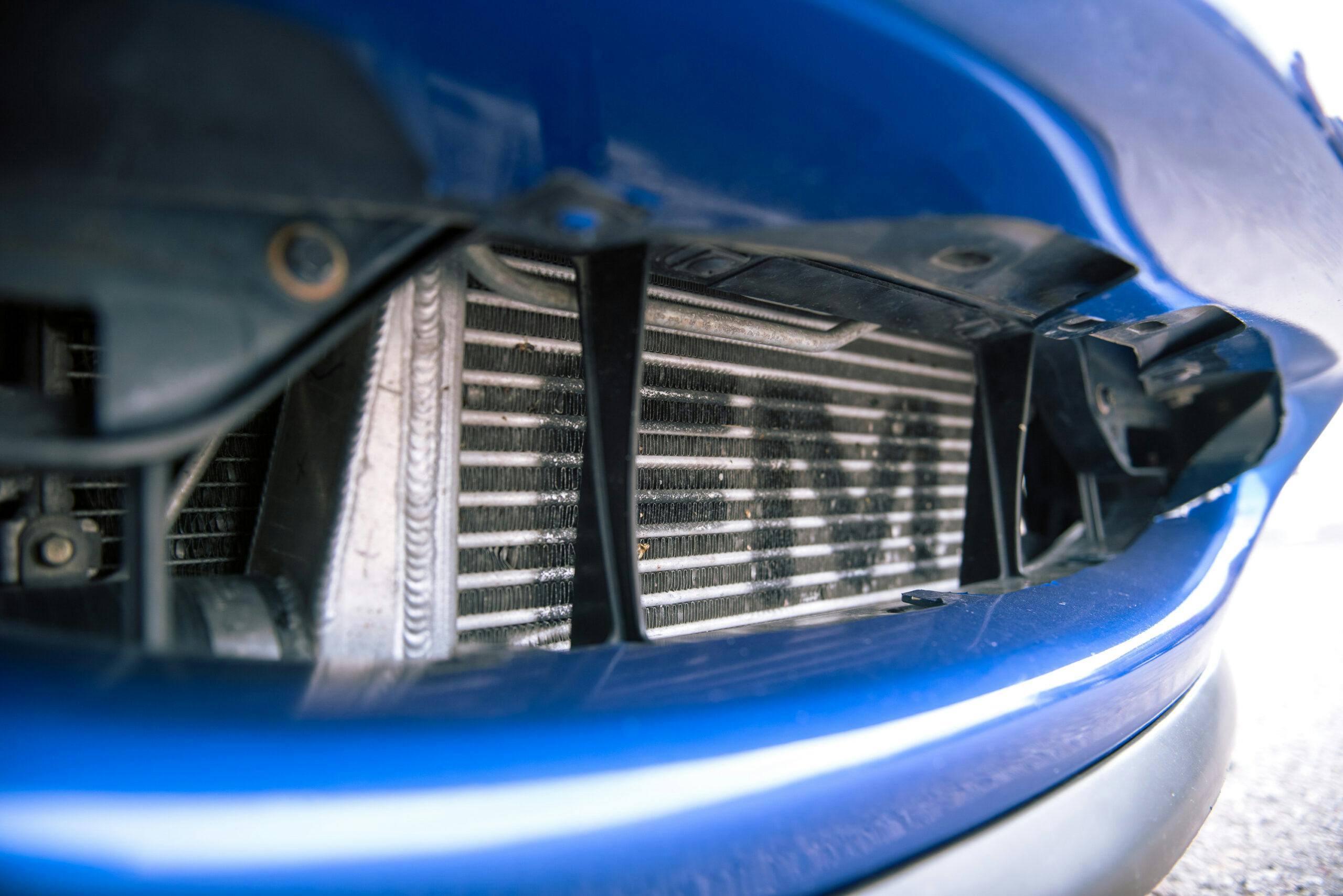
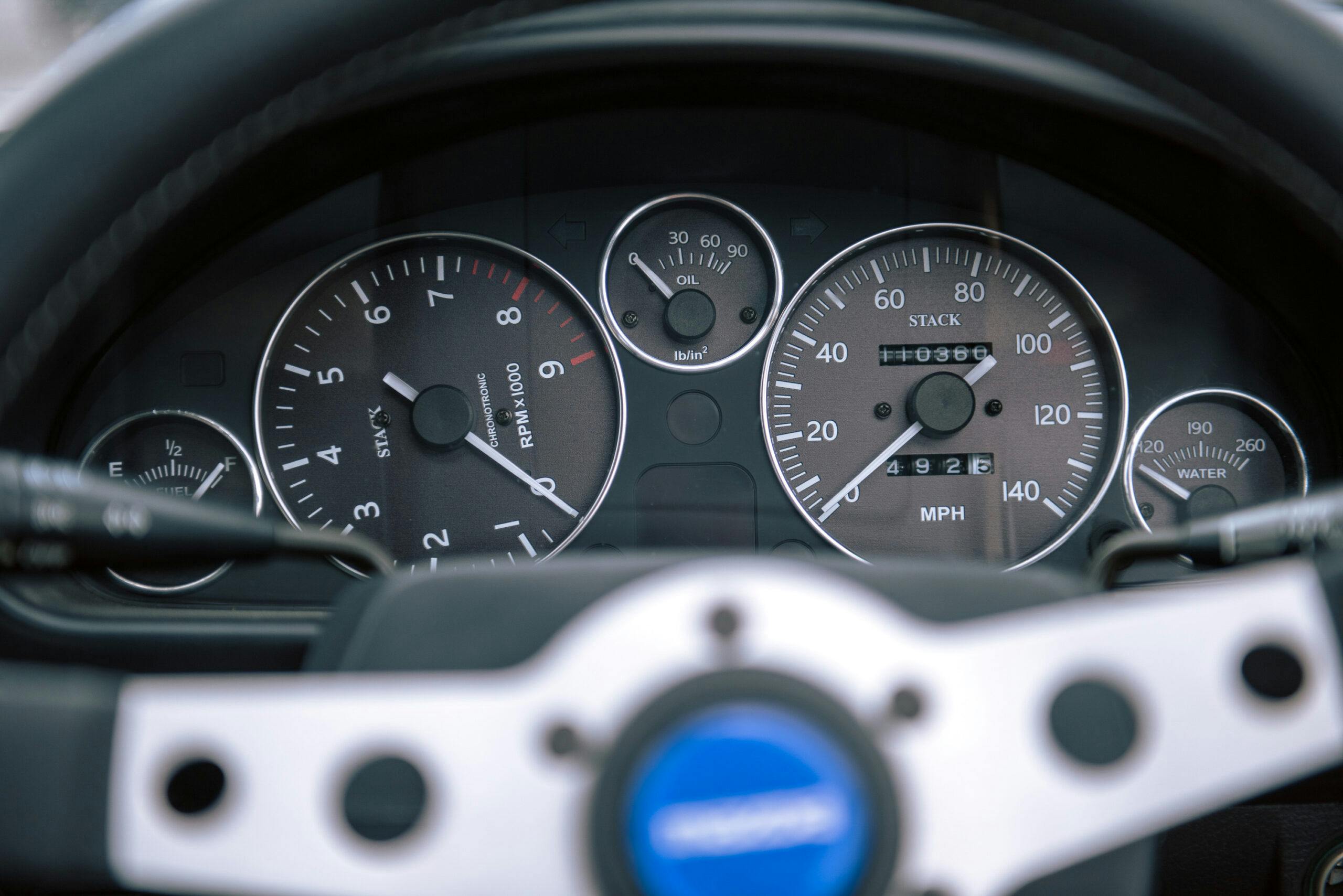
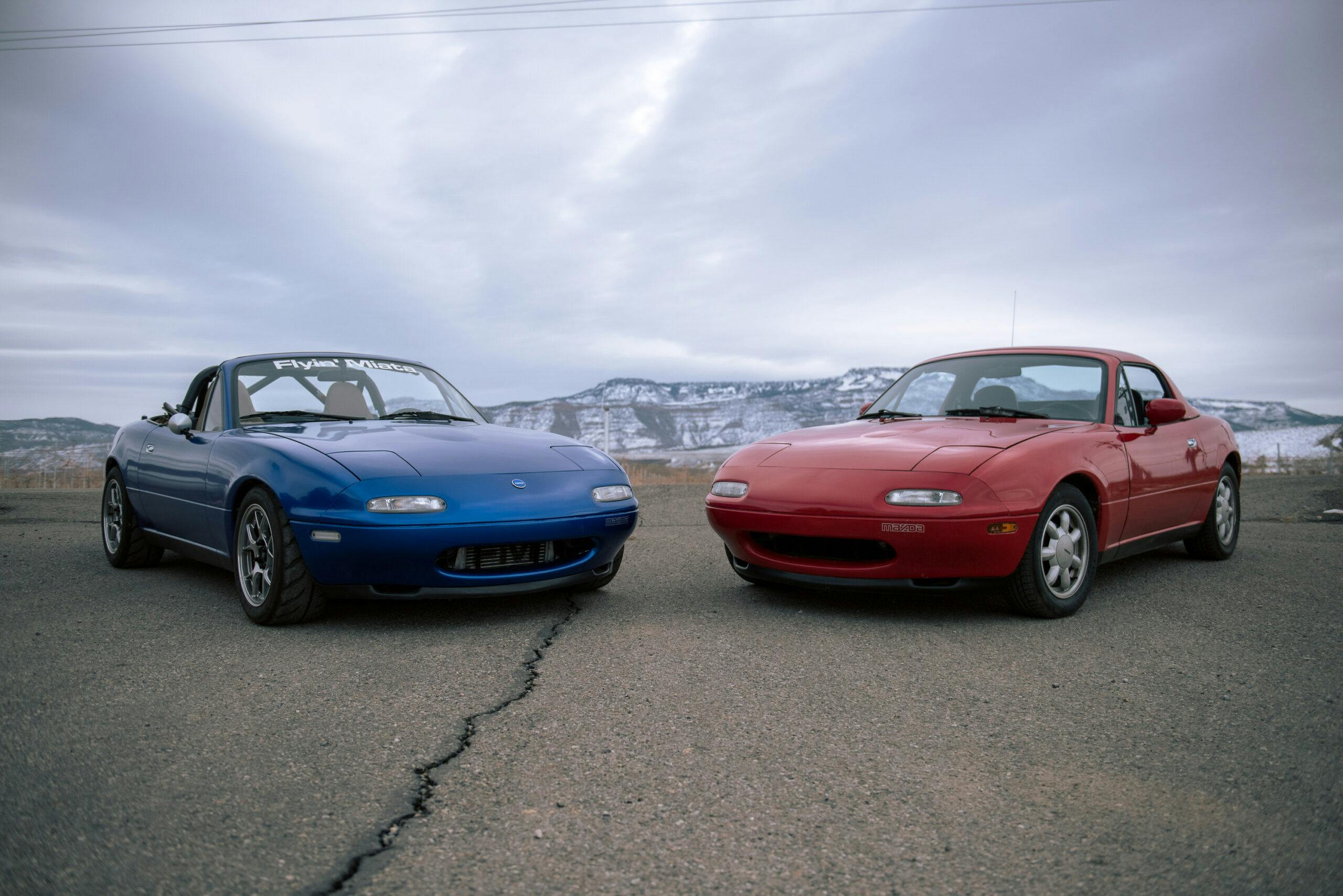

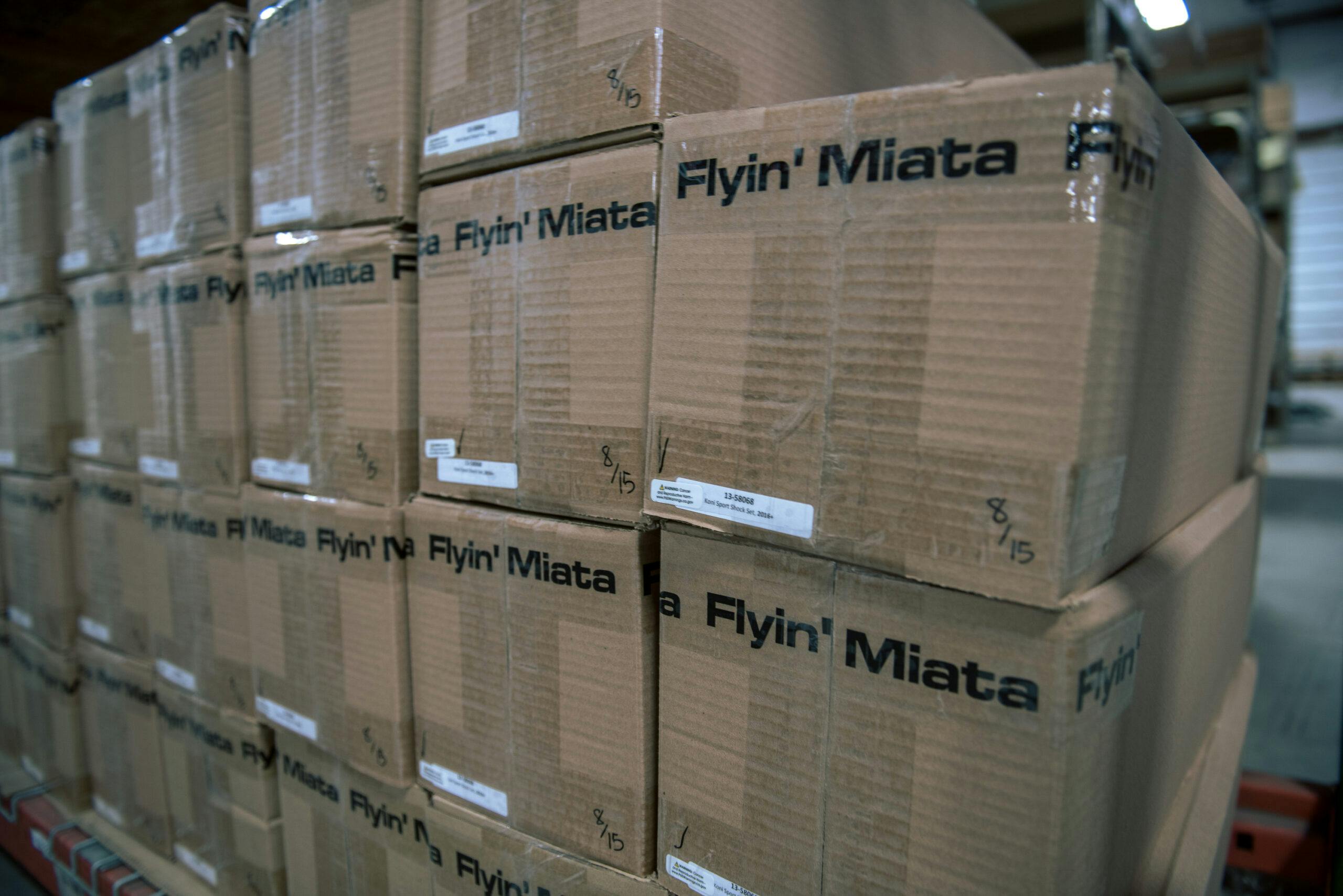
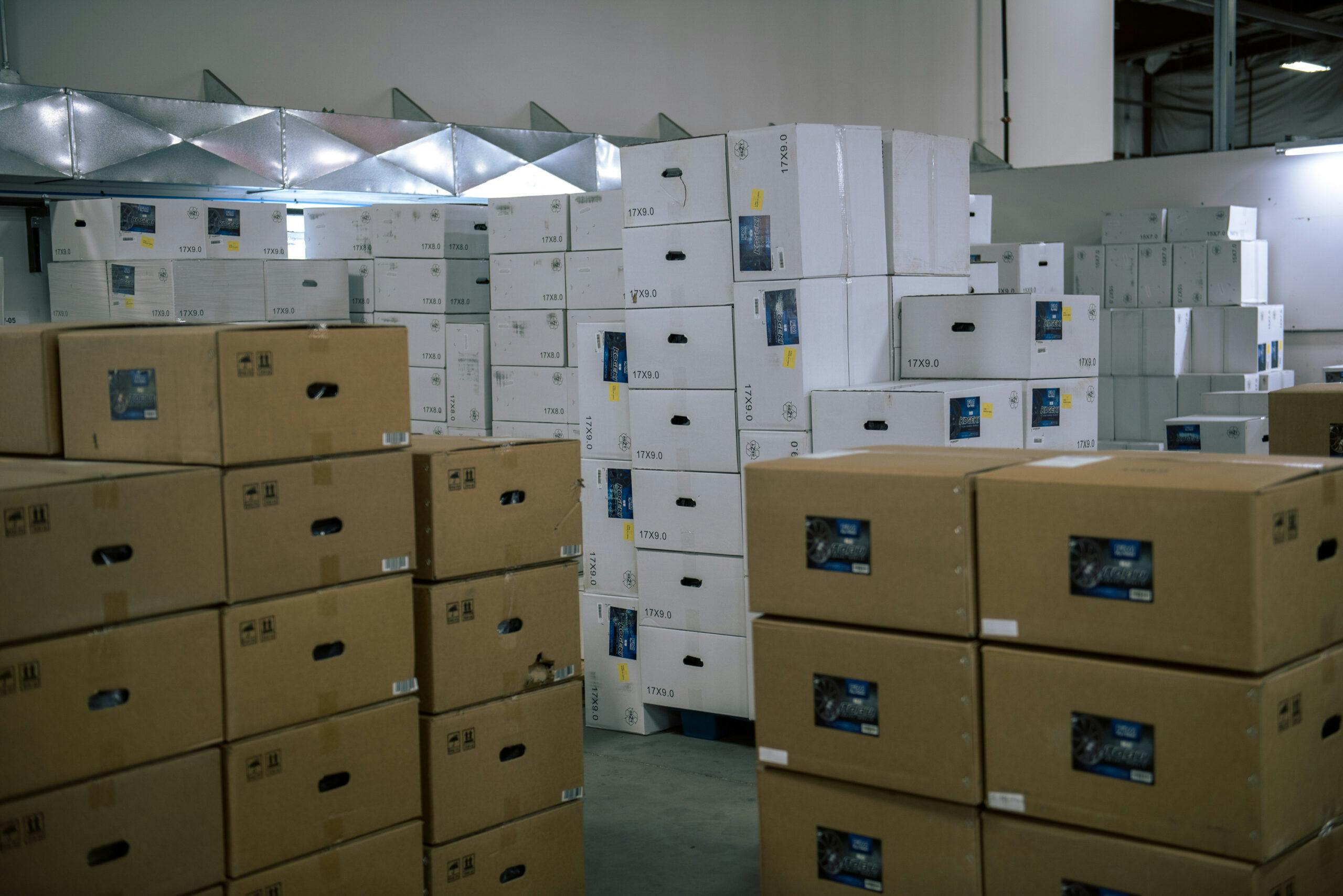

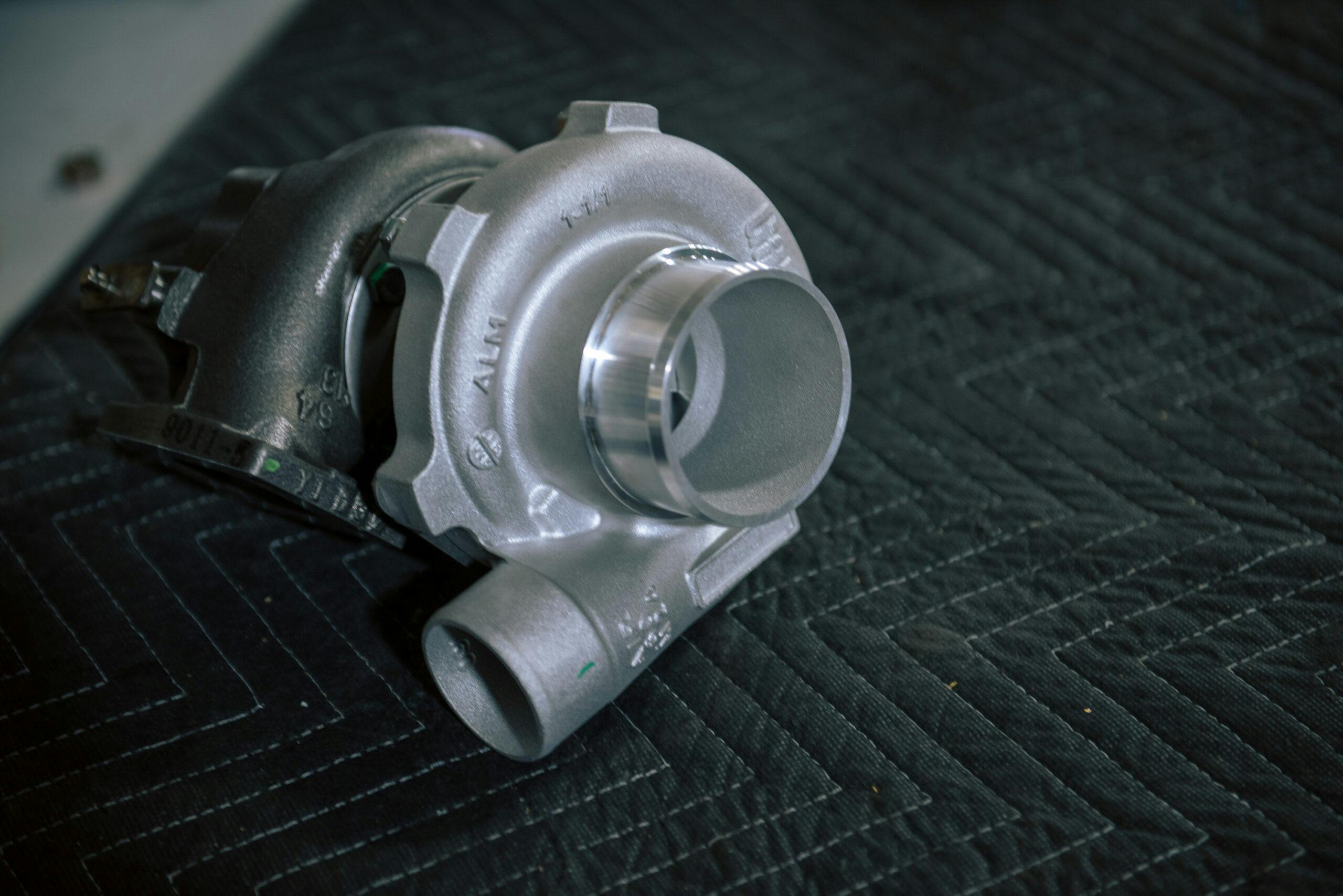
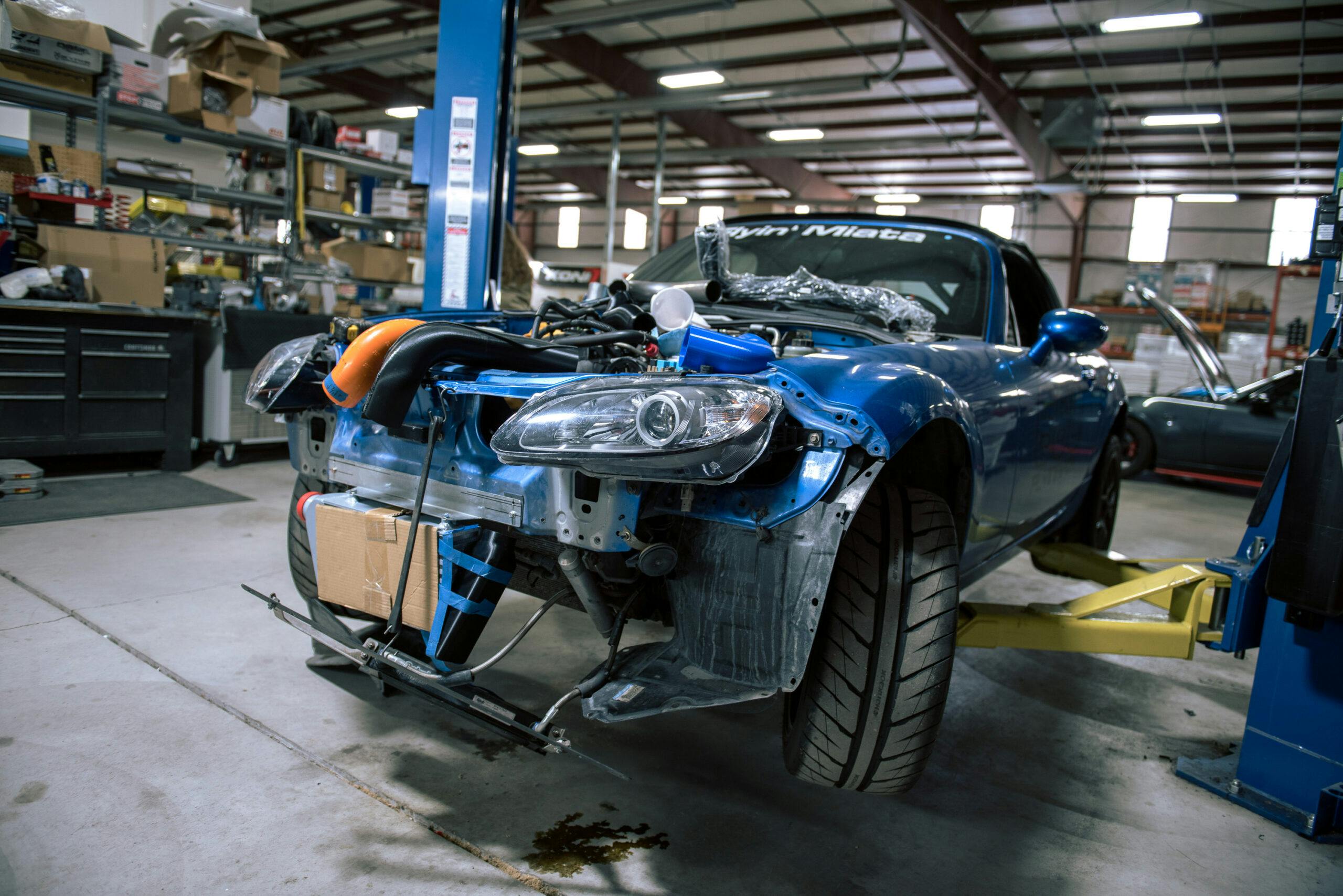

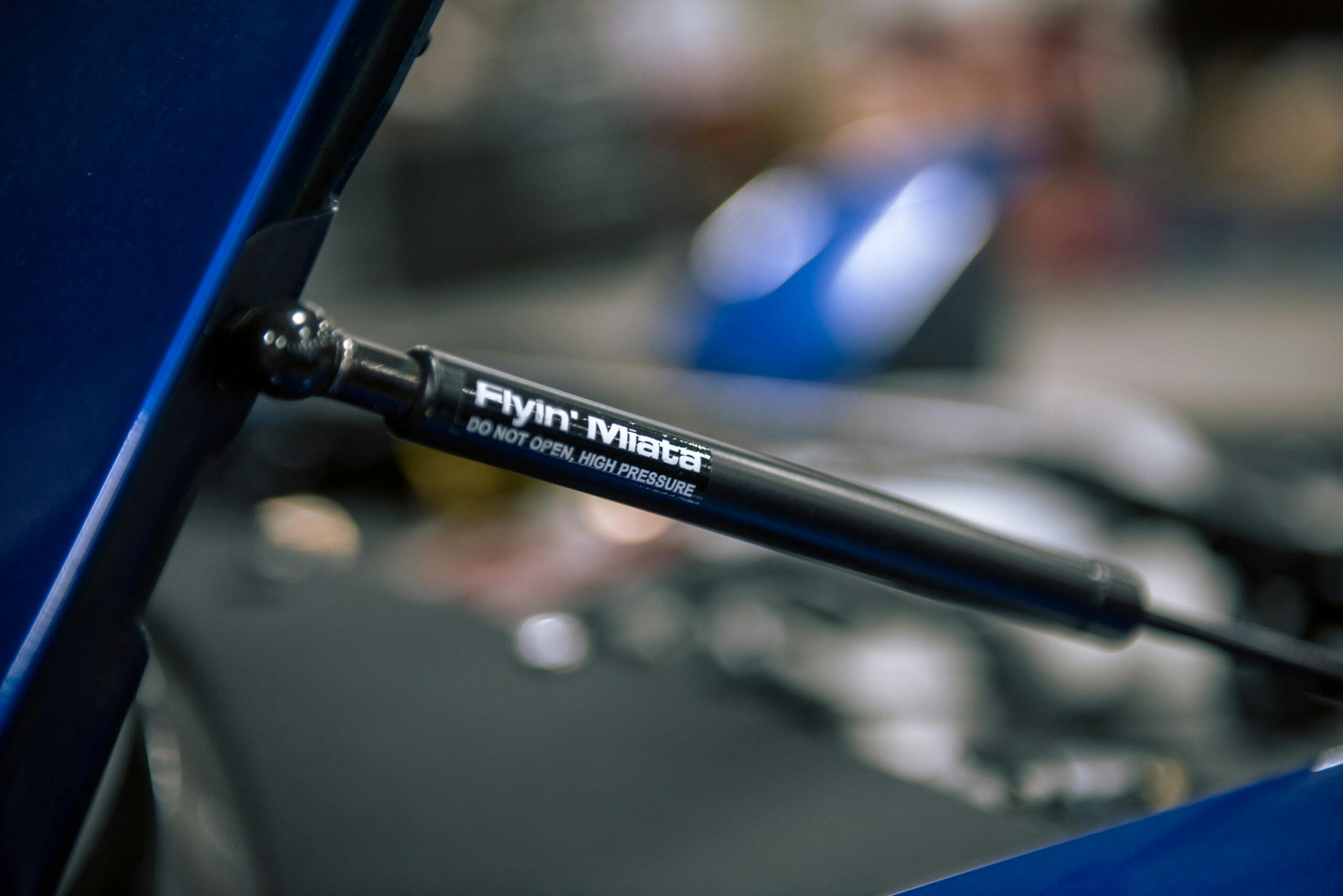
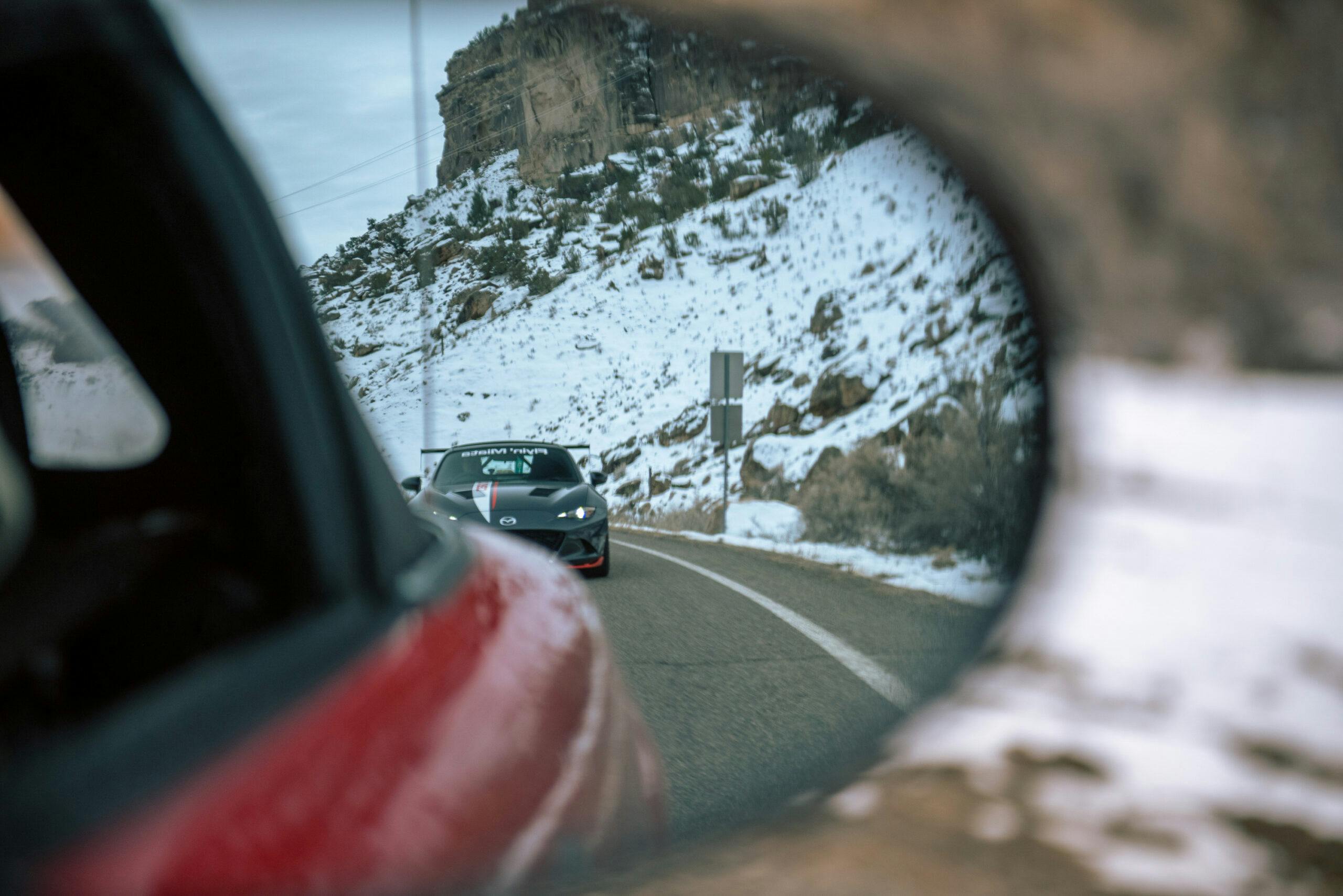
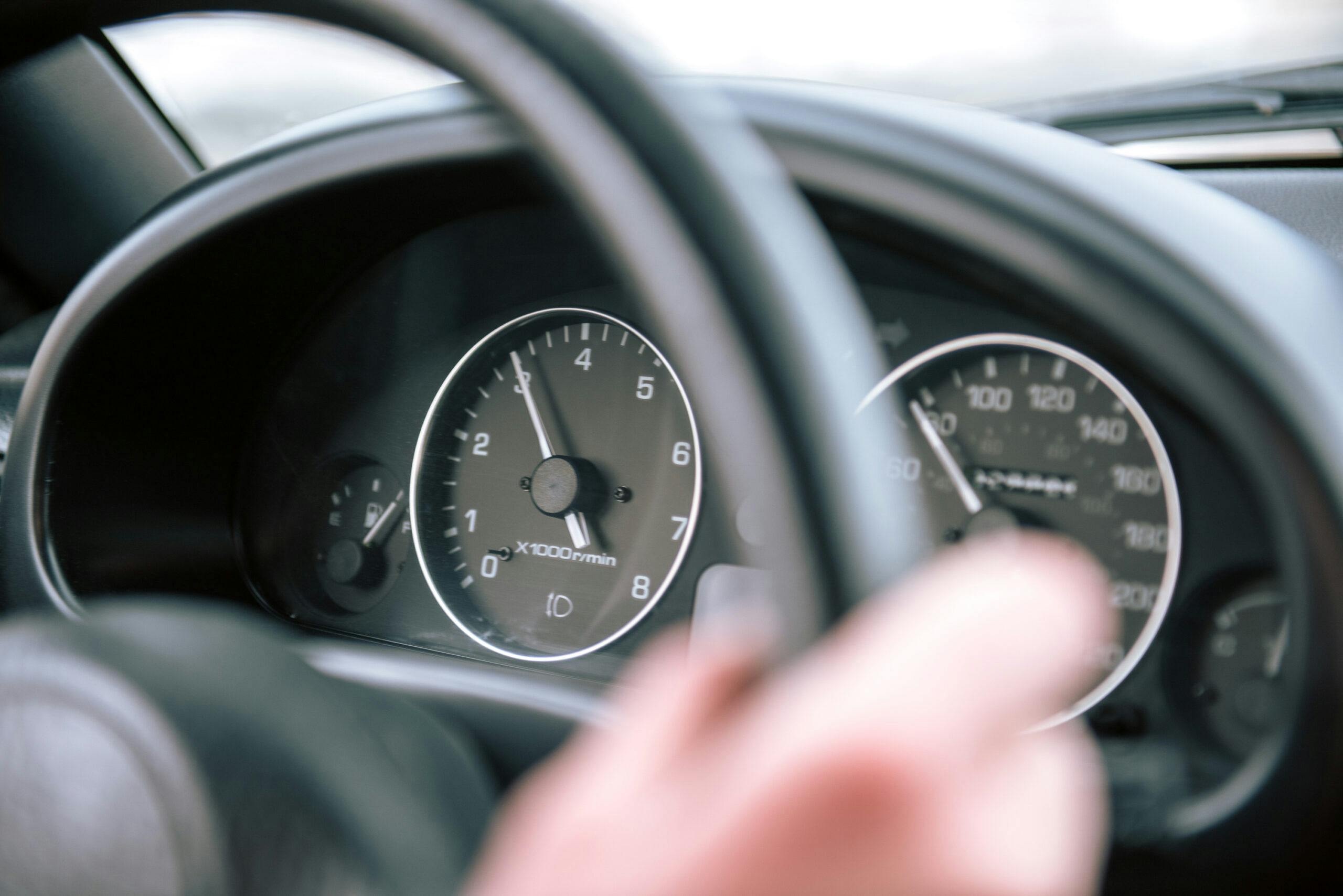

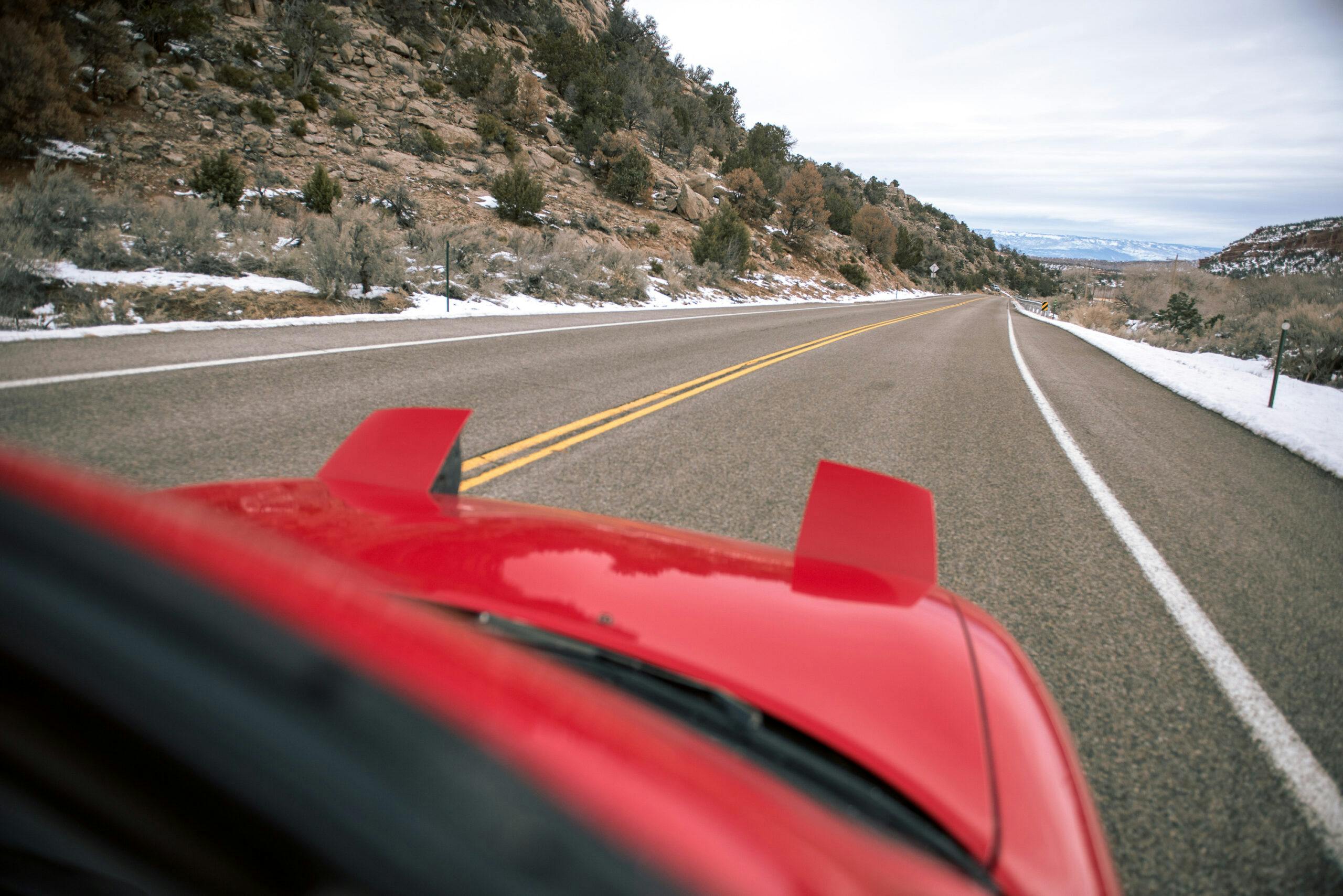
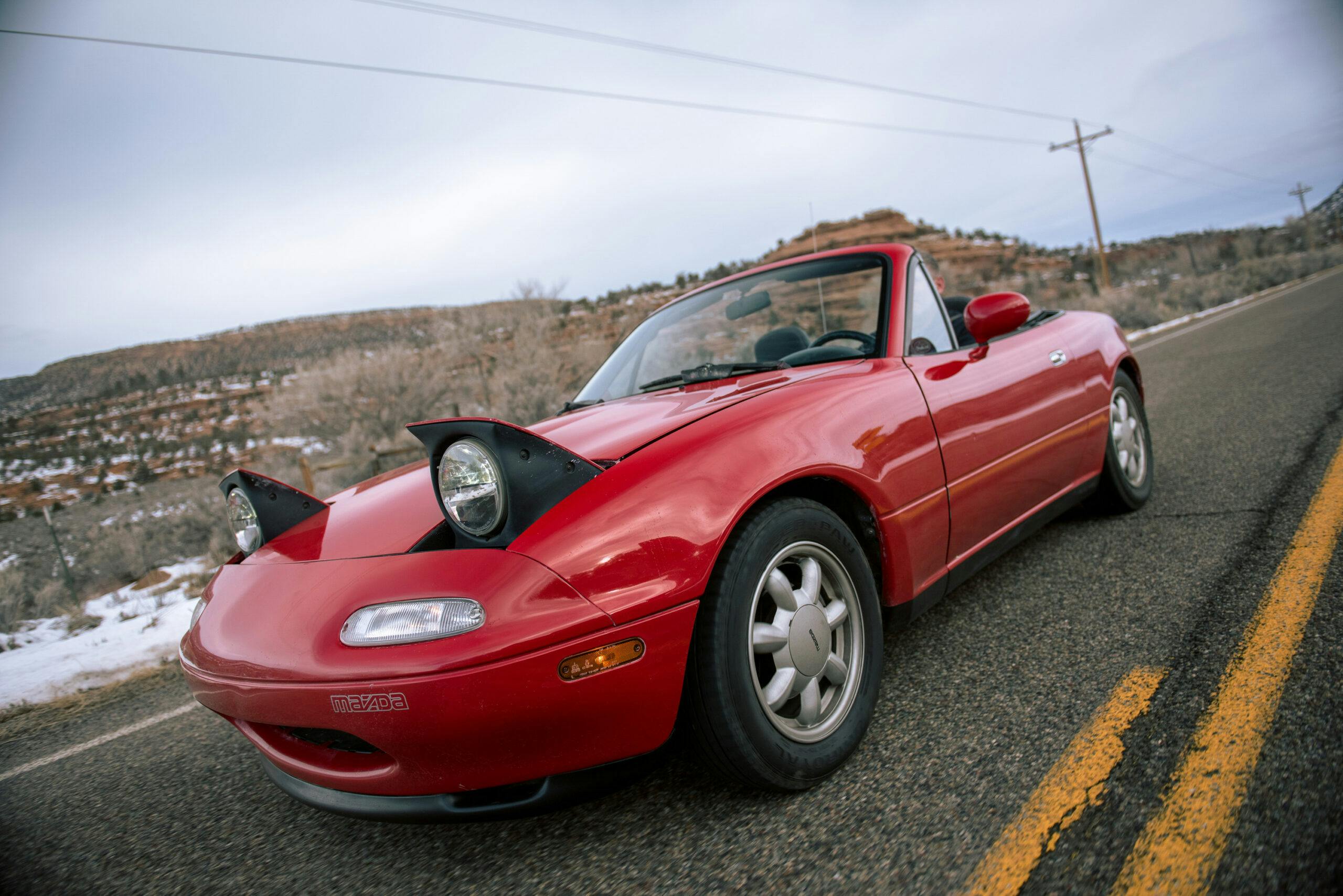

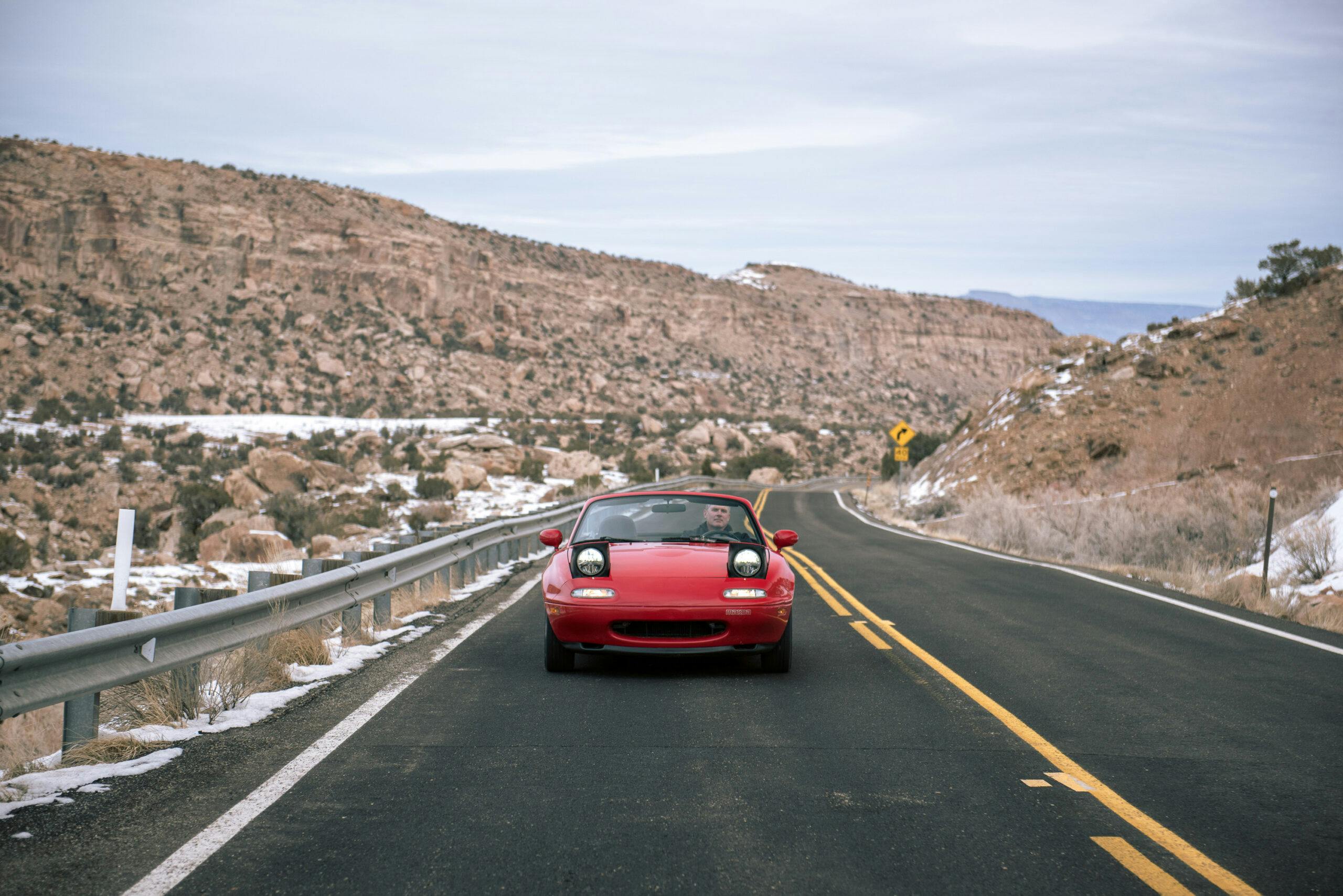
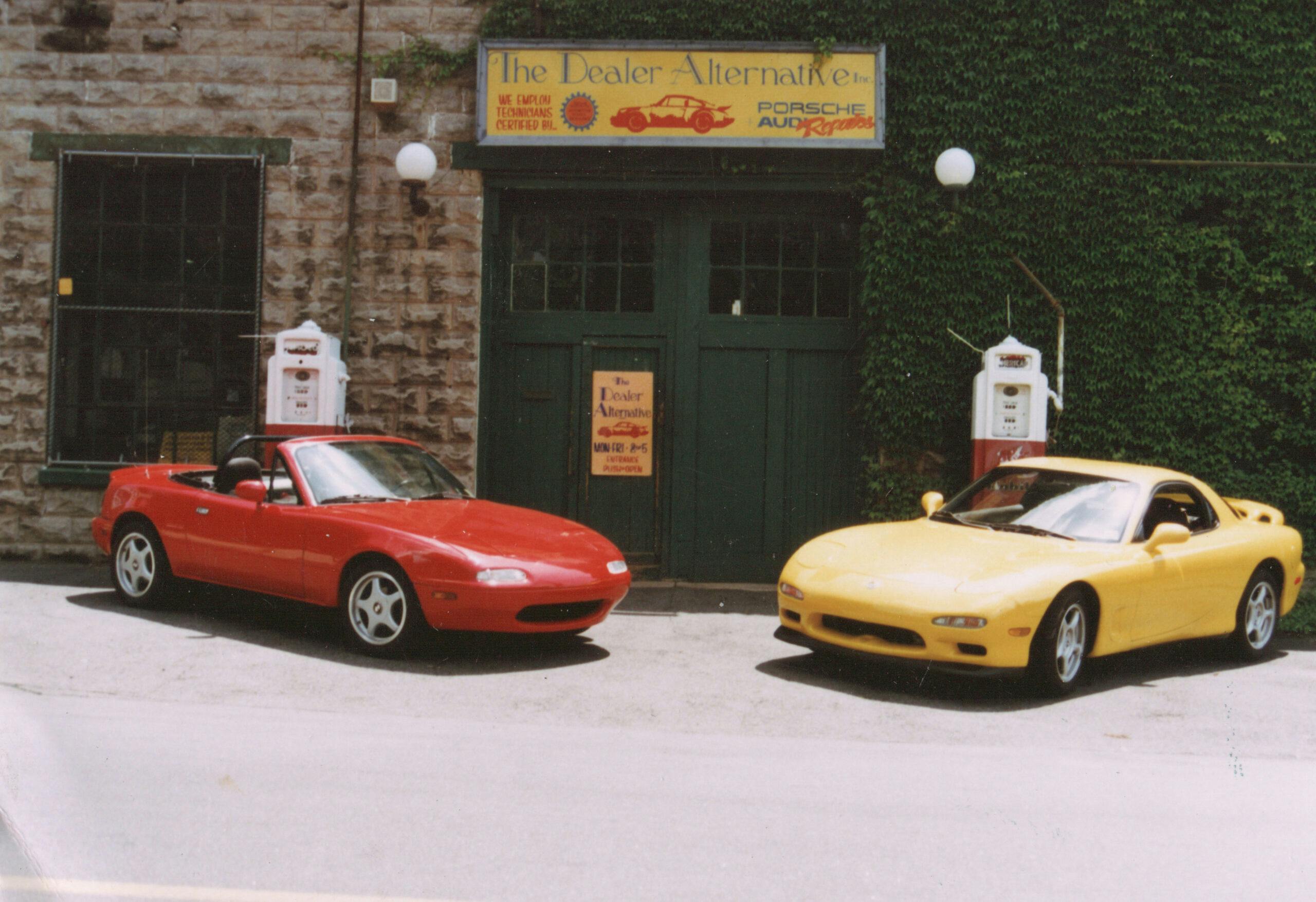
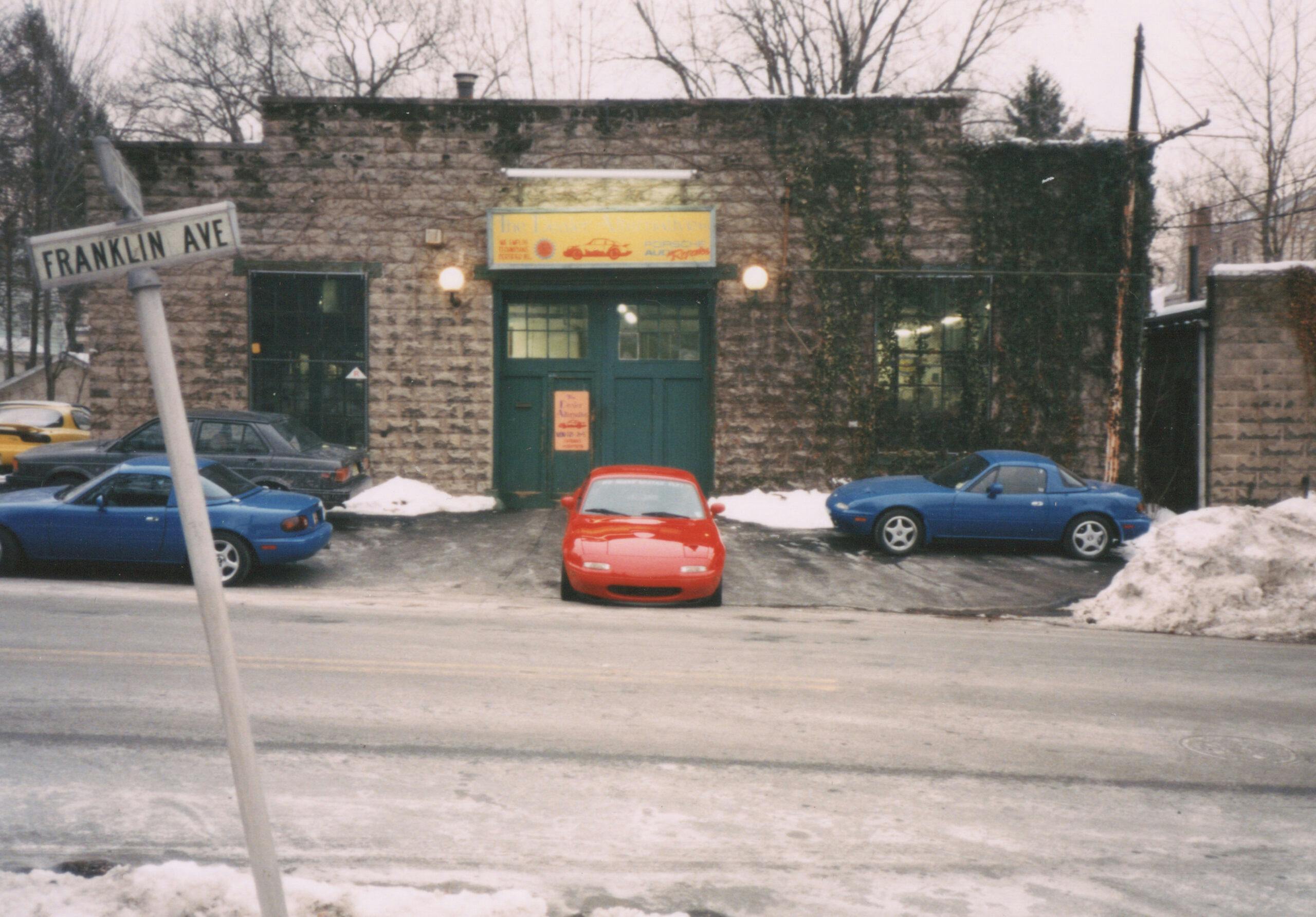
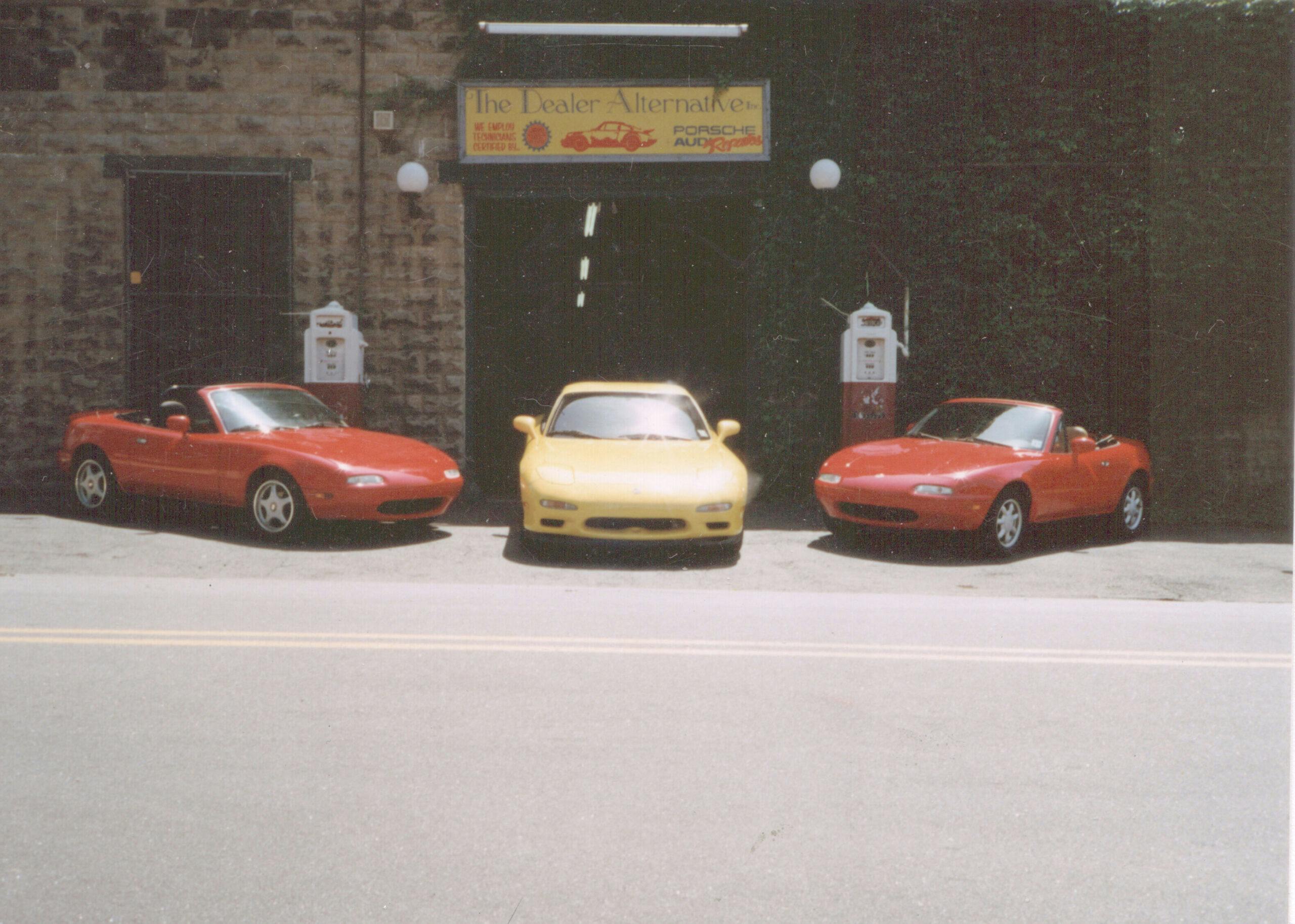
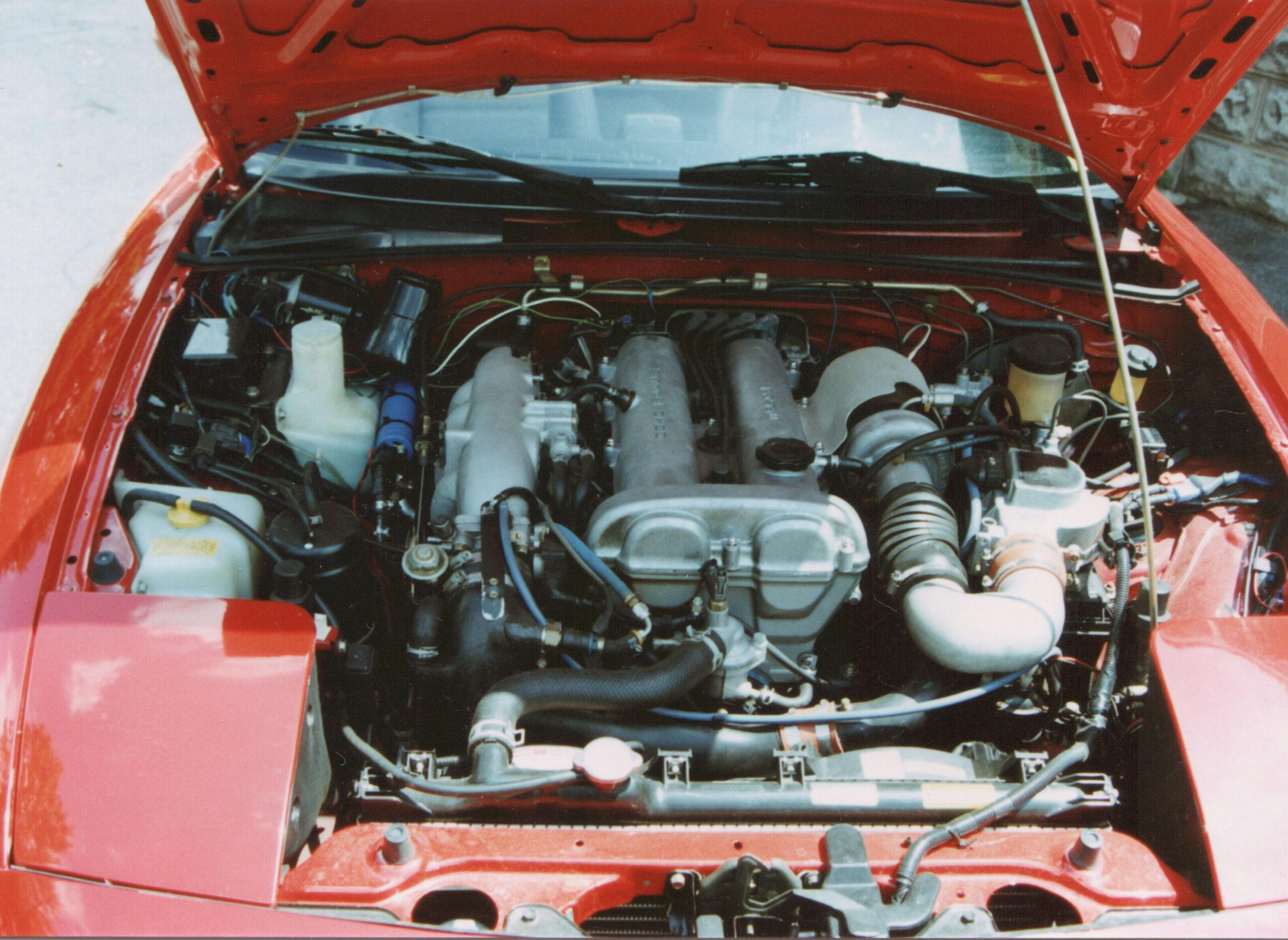

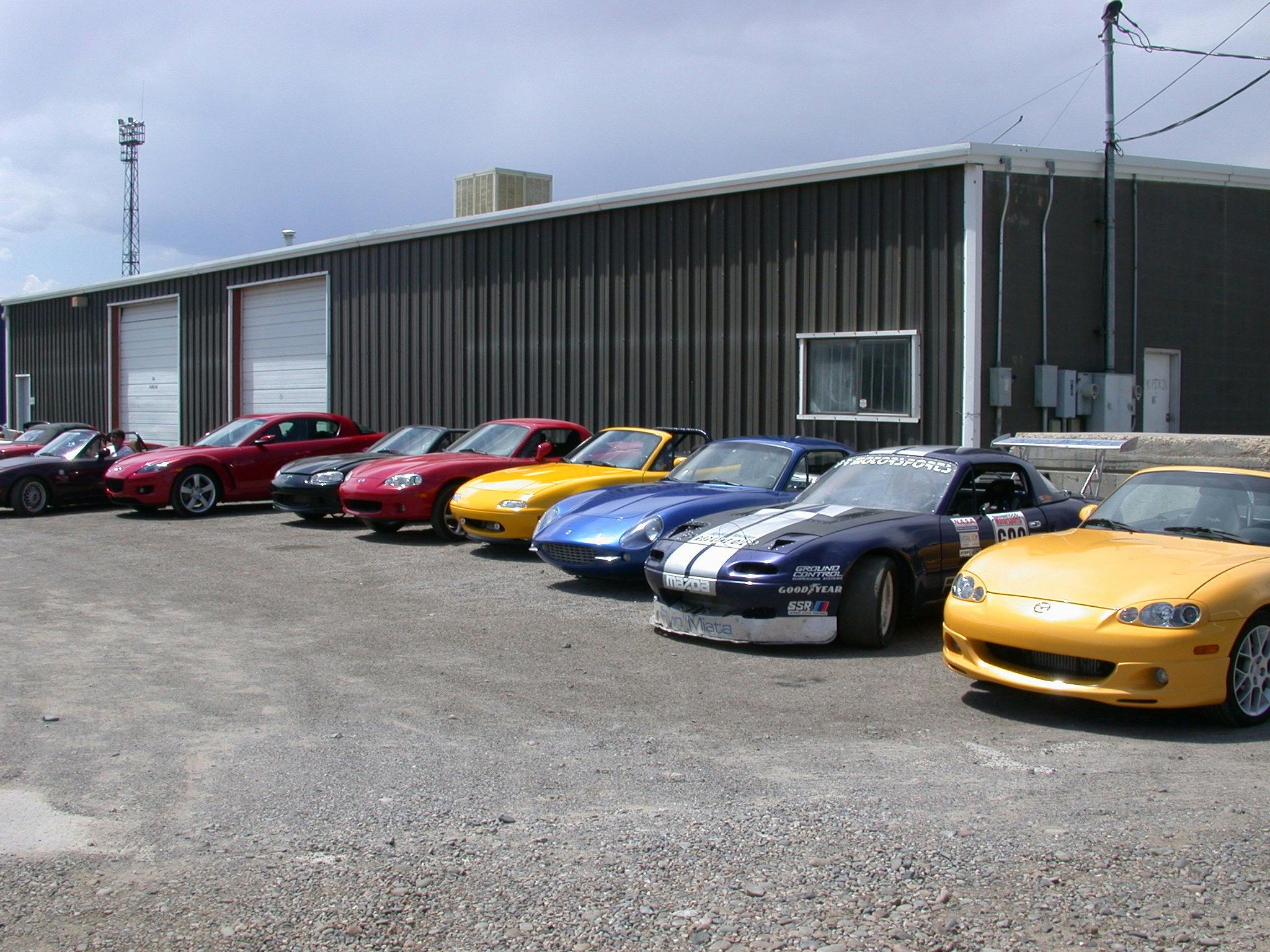
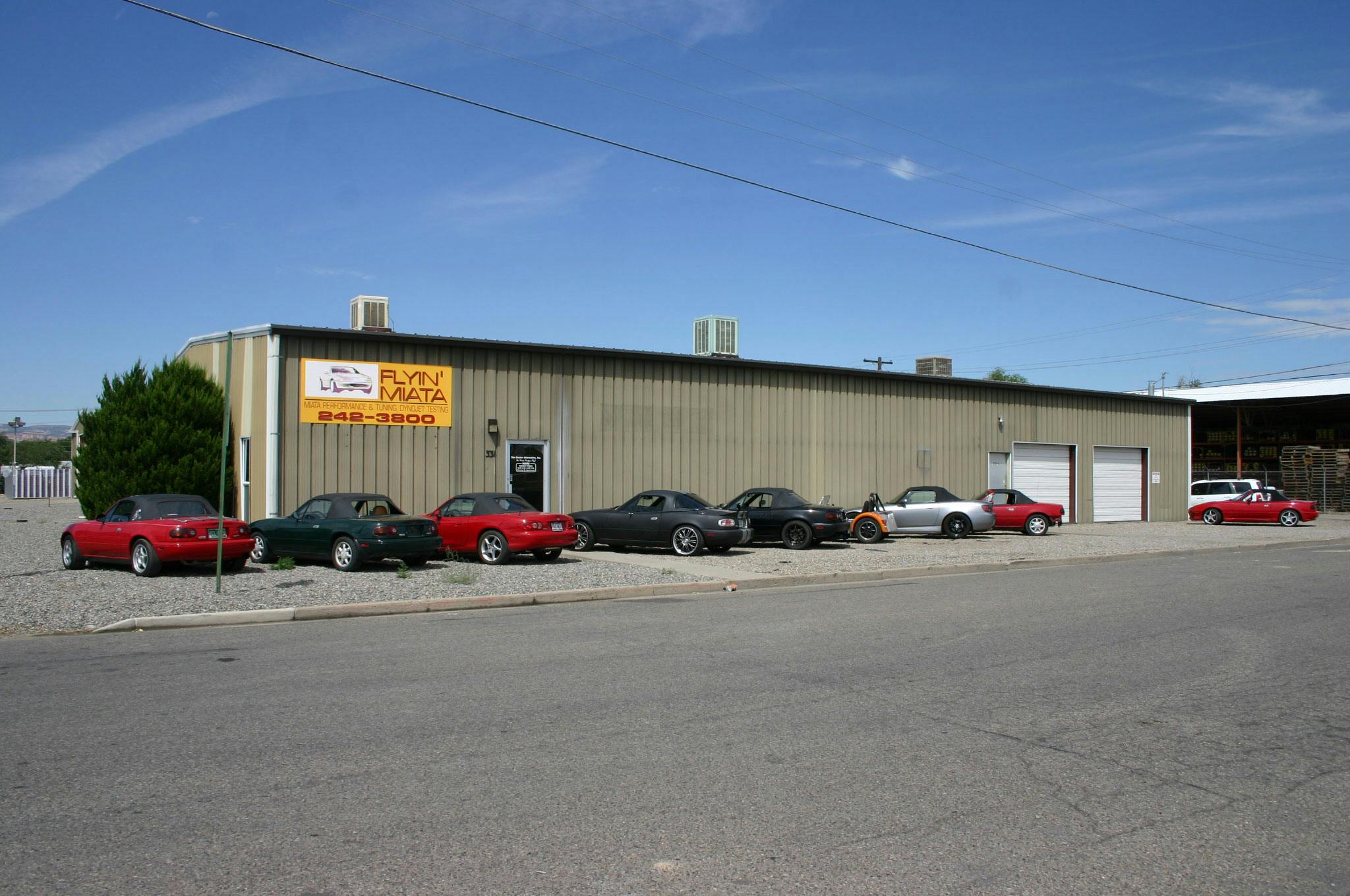
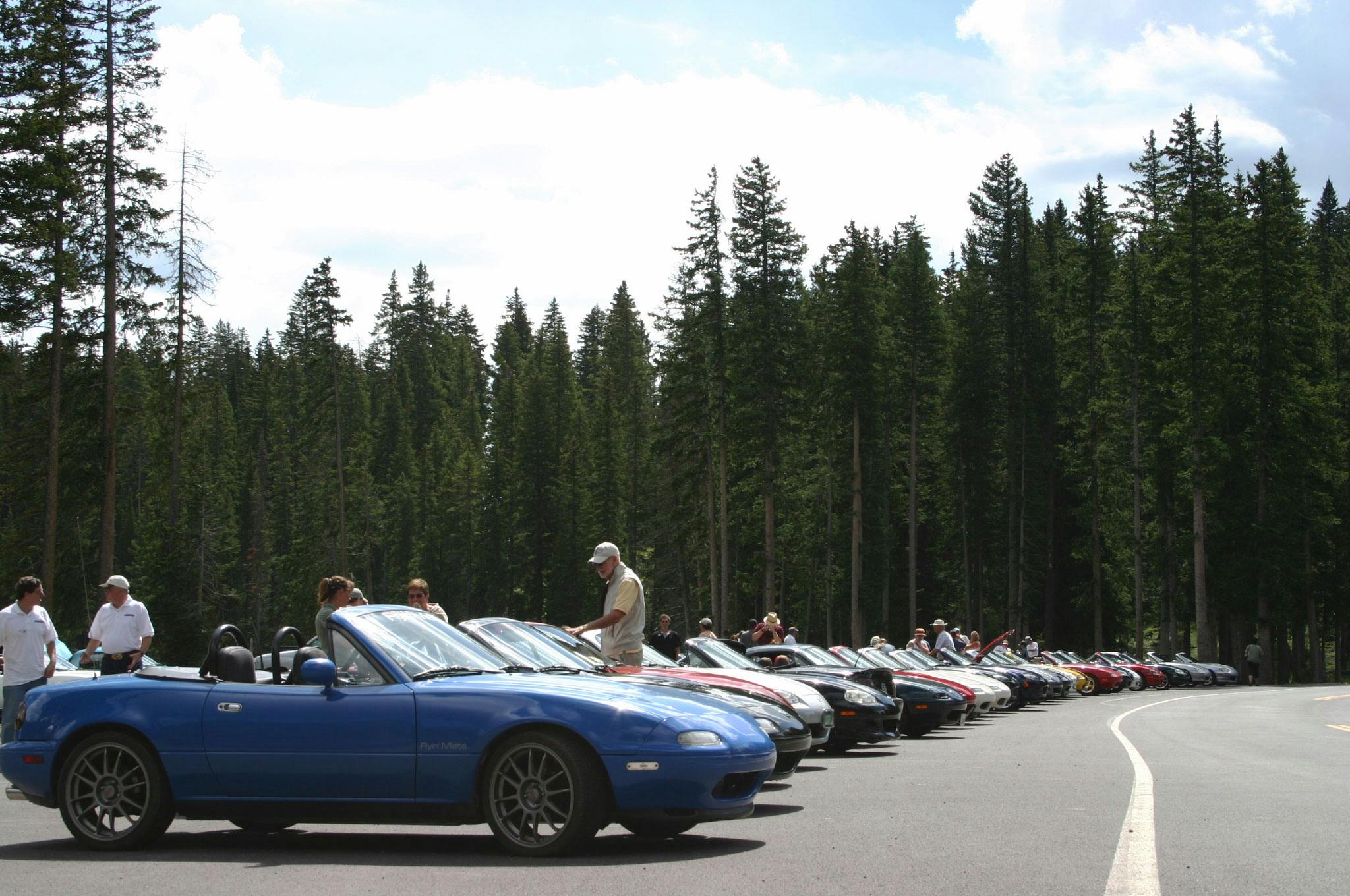
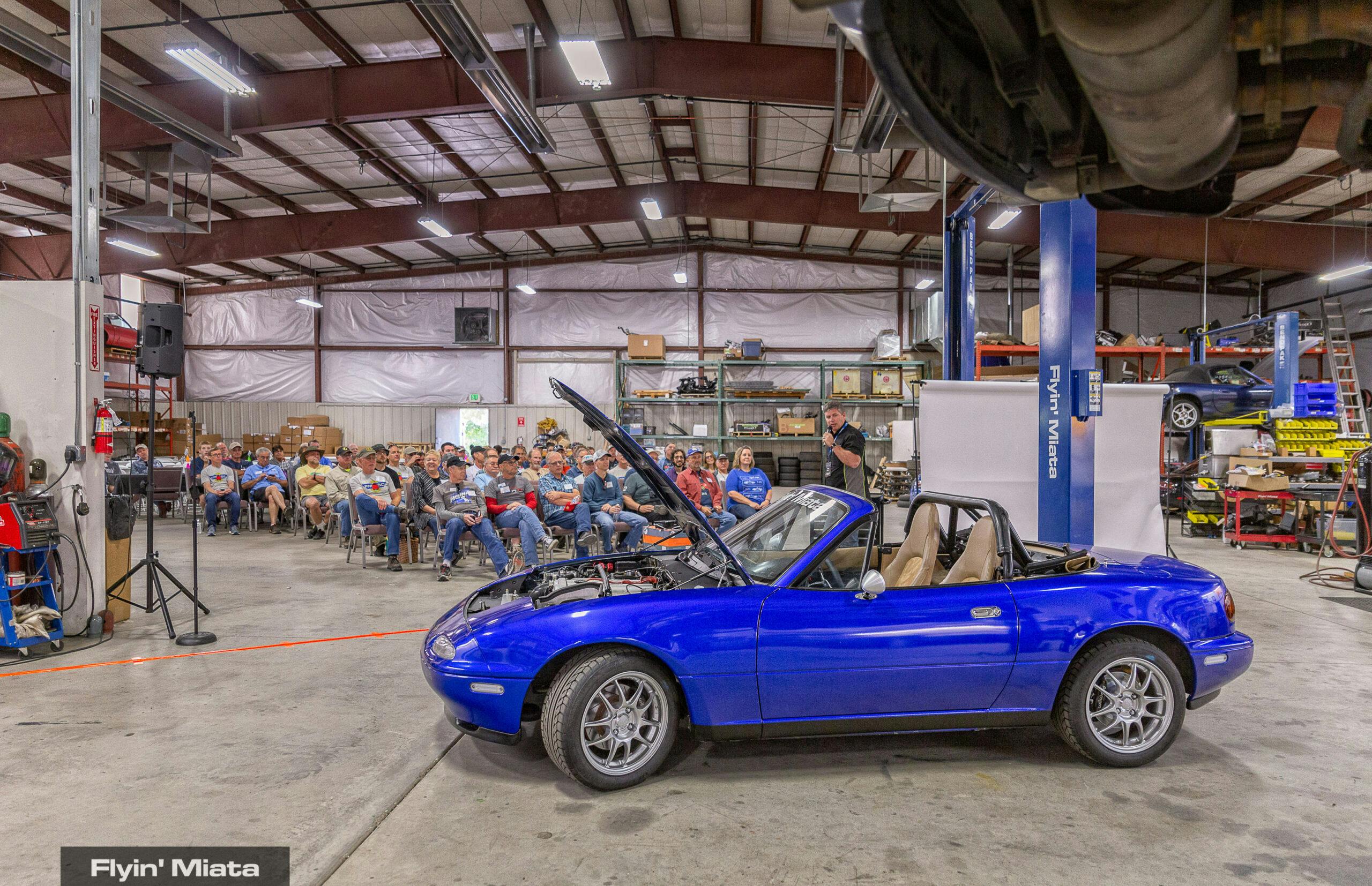
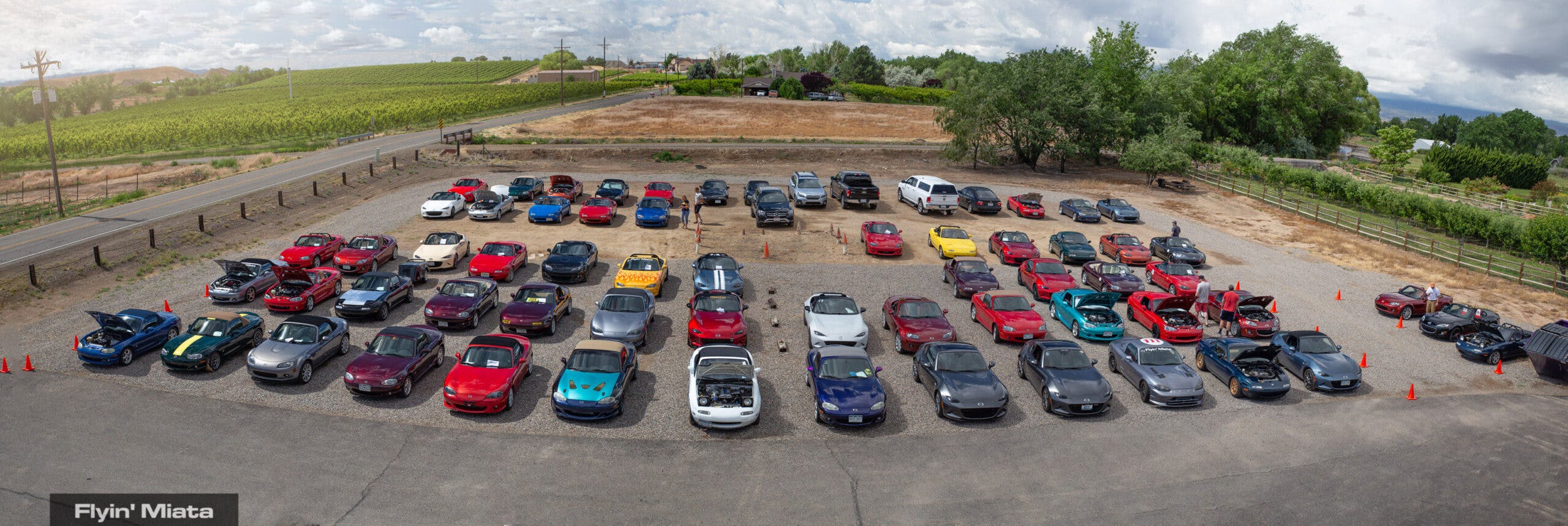
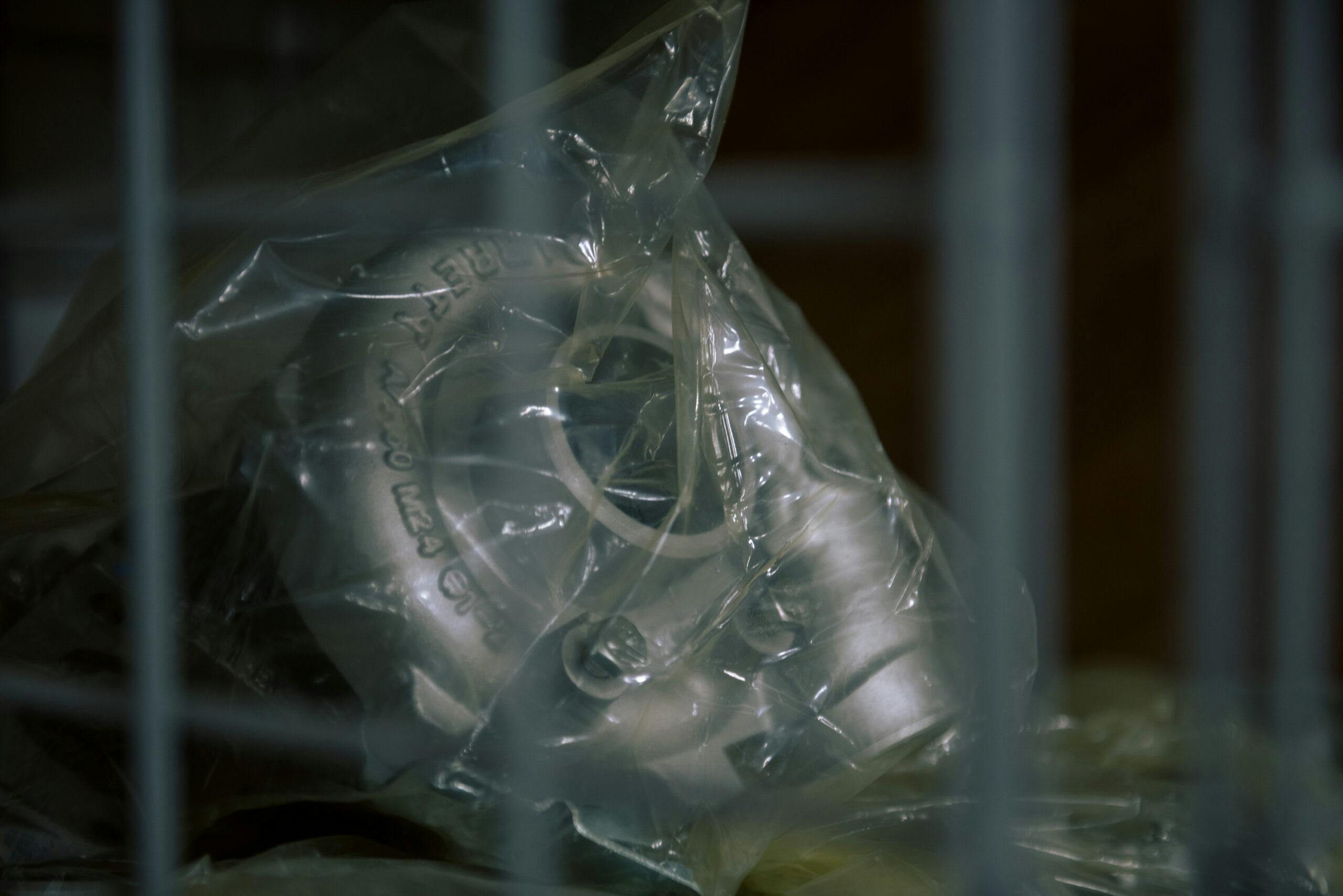

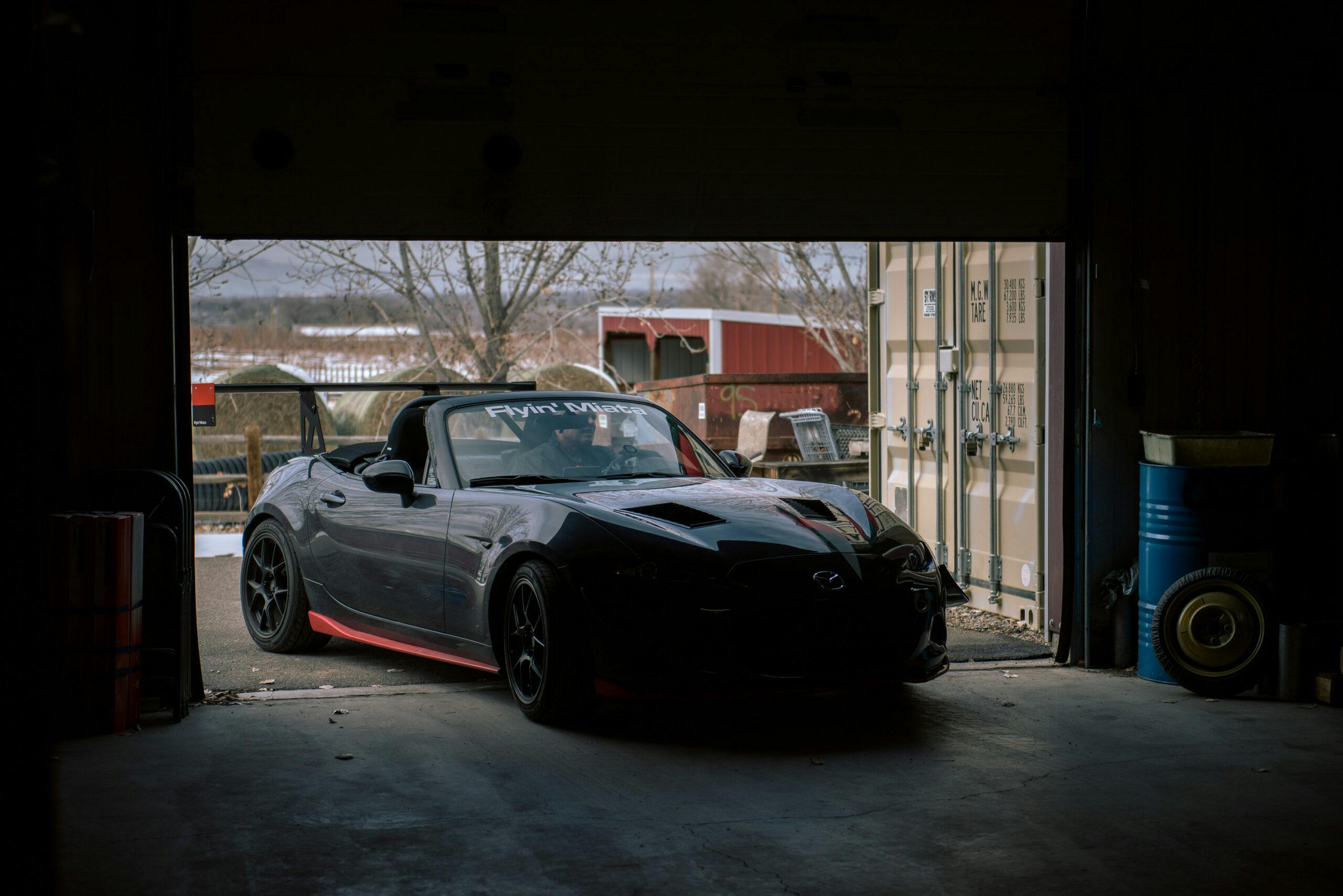



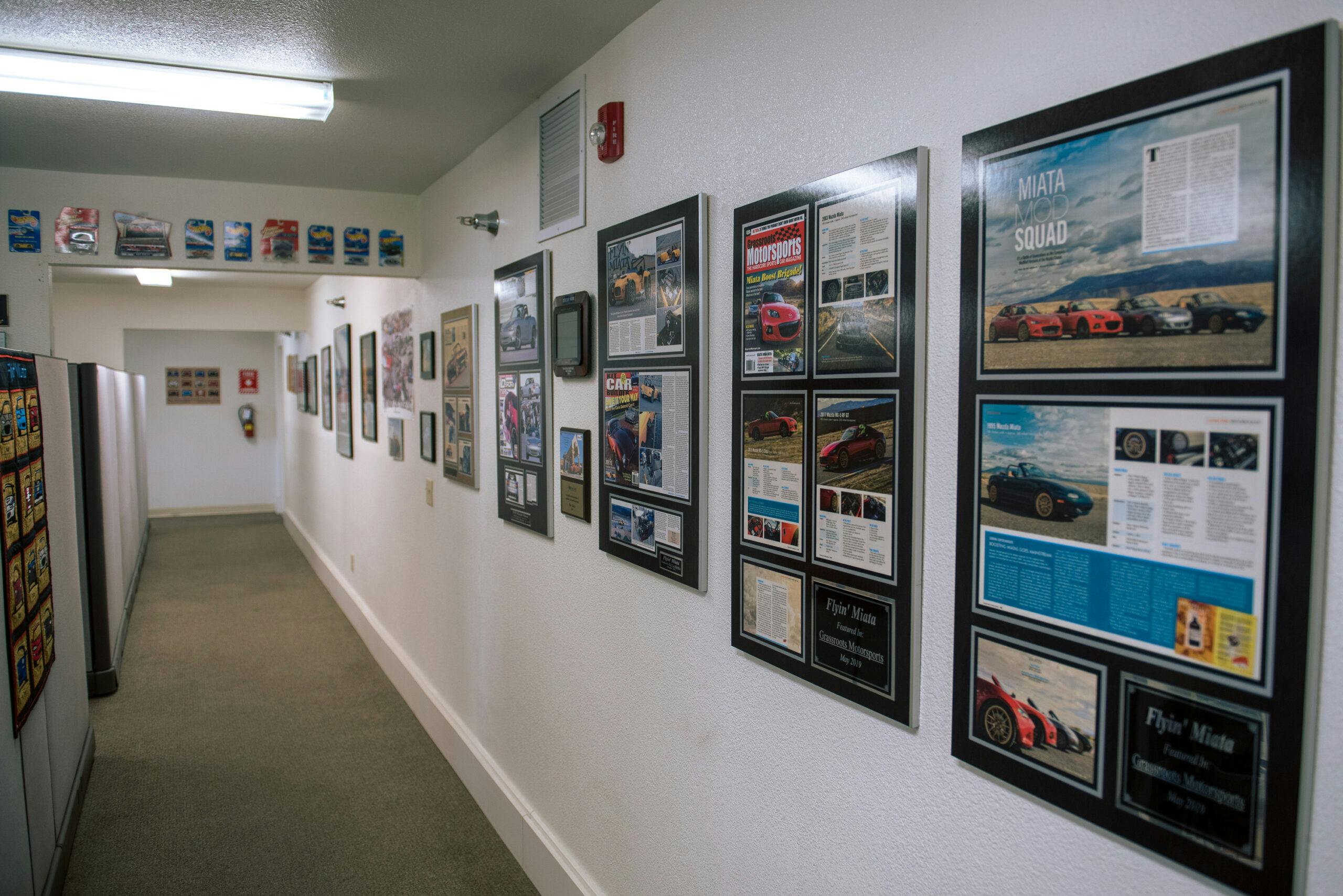
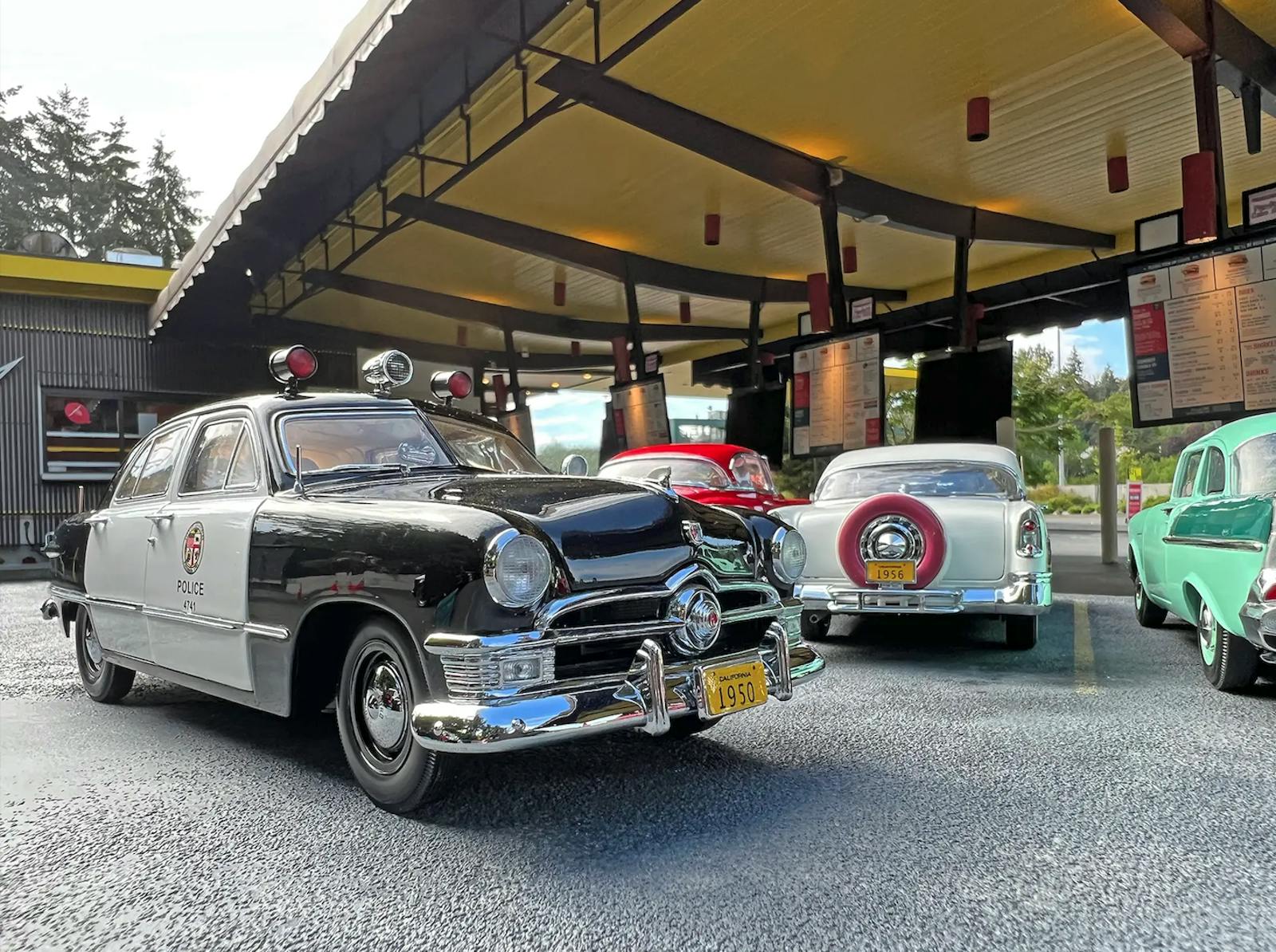

Great article! I have FM suspension on my NA, and knew they were a cool local company, but had no idea how long the legacy was or how committed they were to the community (co-op model, royalties paid out to good crowd-sourced ideas, etc). So cool seeing the parking lot absolutely full of cool cars on what I assume is a “normal work day”. Any insight on why they seem to favor NBs…?
As the novice driver of a base nb1, I can say without having driven any other model, NBs are obviously the best, my own poor autocross showings be damned. The ND that constantly slaughtered me was clearly cheating. There can be no other explanation.
The 180 degree reverse screw up of the Edsel by Ford. Their history is full of the production of crap vehicles such as the Edsel, Pinto, etc & the elimination of probable wonderful vehicles prior to them being built. This proposed Jag may be the best looking car I have ever seen in my nearly 80 years. I thank God that Ford didn’t own Jag while the E was in pre-construction!
Very cool article on FM. I have seen a few in person. Fun cars.
I’ve owned Miatas, on and off, since the beginning. Flying Miata has a perfect reputation in the Miata community. Great story.
Great company. I have a 2016 ND which is a wonderful car with the exception of the original sway bars. I replaced them with a set of Flyin’ Miata bars and the difference in handling is considerable – car is much better.
I have had two Miata’s, ’95 NA, ’04 NB. The NB is the best car I’ve had in my 85yrs! It still retains the clean, pure design of the the NA with nice refinement. Very low maintenance, regular oil/filter changes and the alternator belt at 88K miles.
Excellent!
As a owner of one of 40 Flying Miata V8 cars , I have to say it’s one of the fastest , best handling car I have owned. This car has won over 200 awards at local car shows and still to this day turns head wherever it goes.
As the driver of a Mazdaspeed Miata (only factory turbo Miata made to date), improved almost exclusively with Flyin’ Miata parts to go from what is a 155whp car to a 200whp car (conservatively tuned @ 11.5psi): I can vouch for them as a legit dealer alternative. People within the Miata community view their parts as OEM+ and I wouldn’t be surprised to hear comparisons to names like Shelby, Yenko, and the like when it’s all said and done. Great story and glad to hear they are staying on the right path. True gem for the Miata community.
I’ve enjoyed a lifetime of thrashing together overpowered American muscle and don’t regret any of it but can honestly admit my automotive life may have taken an entirely different path if I’d been exposed to a Miata early enough.
Great story. Founder Bill Cardell’s exit from the company is a great story by itself, making possible today’s Flyin’ Miata. Had Bill sold the company conventionally, the new Accountants would have wrung out all the innovation and passion.